Station Photo Verification (SPV)
#Station Photo Verification (SPV) Full Documentation
At WeatherXM, we aim to ensure that all station installations in our network follow, as closely as possible, the guidelines set by the World Meteorological Organization (WMO). This alignment ensures that the data generated by our stations is reliable and can be effectively used across the various use cases our company supports.
The SPV mechanism serves a dual purpose, just like all quality control processes related to data and deployments at WeatherXM: a. To document the deployment so that anyone interested in the station’s data knows whether it can be trusted, and b. To inform the user about the quality of the deployment, with the goal of encouraging and motivating them to improve it as much as possible.
1. The SPV Aspects
To ensure the process is as objective as possible, we have defined seven distinct annotation categories (hereafter referred to as SPV aspects). One aspect assesses the validity of the photo, four aspects evaluate the potential impact of the deployment on specific sensors, and two additional aspects describe the mast’s properties.
As mentioned earlier, there are seven SPV aspects to annotate for every single photo of a given station deployment. Since we expect four photos per deployment, one for each of the four points of the horizon (N, E, S, W), each of the seven SPV aspects should be annotated for every photo. This multi-aspect scoring approach allows us to more effectively identify which sensors may be affected by a faulty deployment and to highlight these impacts.
The SPV aspects, which are shown together with their annotations and scores in Table 1, are:
- Photo Validity
- Mast Height
- Mast Inclination
- Temperature and RH
- Wind
- Precipitation
- Solar Irradiance
Note that: a. Mast height and mast inclination are the 2 aspects that are not scored. b. Temperature, relative humidity (RH), wind, precipitation, and solar irradiance are the 4 aspects related to the corresponding sensors referred to as SPV sensor aspects.
In addition to the aspects, the reviewer is able to leave comments regarding potential issues that have not been anticipated by the predefined annotation system, as well as suggestions on how the user could improve their deployment.
Table 1. All the SPV aspects together with their possible annotations (per aspect) and their corresponding scores.
| SPV Aspect | Annotations | Score |
|---|---|---|
| photo_validity | valid | 1 |
| partly_valid | 0.5 | |
| invalid | 0 | |
| mast_height | over | - |
| proper | - | |
| mid | - | |
| low | - | |
| mast_inclination | inclined | - |
| not_inclined | - | |
| t_rh | valid | 1 |
| partly_affected | 0.5 | |
| biased | 0 | |
| wind | no_obstacles | 1 |
| small_obstacles | 0.5 | |
| significant_obstacles | 0 | |
| precipitation | no_obstacles | 1 |
| small_obstacles | 0.5 | |
| significant_obstacles | 0 | |
| solar_irradiance | no_obstacles | 1 |
| small_obstacles | 0.5 | |
| significant_obstacles | 0 |
2. The Scoring Process
Once each SPV aspect has been uniquely annotated for each of the 4 photos of the deployment (each for every single point of horizon -N, E, S, W-), the following calculations can be performed to determine the final score for each deployment: a. Average the scores of the SPV sensor aspects per photo (thus per point of horizon) to get the spv_sensor_average_per_horizon_point b. Multiply each spv_sensor_average_per_horizon_point by the corresponding photo validity score (per point of horizon) to obtain spv_fnl_per_horizon_point. c. Average all the elements in spv_fnl_per_horizon_point to obtain the final SPV score of the deployment (spv_total_deployment_score)
Note that each of the four photos should be annotated for all SPV aspects. However, if the photo_validity aspect is marked as invalid, scoring the remaining SPV aspects is of little significance, since marking a photo as invalid automatically sets its score to zero.
The following Python script demonstrates how these calculations can be performed:
import numpy as np
# Each list contains the scores per photo in the order
# [North, East, South, West]
# Define the photo validity aspect
photo_validity_aspect = np.array([1,1,1,0])
# Define a dictionary with all the SPV sensor aspects
spv_sensor_aspects = {
"temperature": np.array([1,1,1,0]),
"rh": np.array([1,1,0.5,0]),
"wind": np.array([1,0.5,0.5,0]),
"precipitation": np.array([1,0.5,0.5,0]),
"solar_irradiance": np.array([np.nan,0,0,0])
}
# Get the average between the SPV sensor aspects per index (index = point of horizon)
values_matrix = np.column_stack(list(spv_sensor_aspects.values()))
spv_sensor_average_per_horizon_point = np.nanmean(values_matrix, axis=1)
# Multiply each horizon point average with the validity score of the photo of the horizon point
spv_fnl_per_horizon_point = photo_validity_aspect * spv_sensor_average_per_horizon_point
# Averaging the the elements of the spv_fnl_per_horizon_point
spv_total_deployment_score = np.nanmean(spv_fnl_per_horizon_point)
3. General Deployment Guidelines
To successfully pass all SPV checkpoints, a user must ensure the following:
A. Photo Validity
- Upload four valid landscape-mode photos (one per cardinal direction: North, East, West, South). Note that the eight aspects are evaluated for each cardinal direction separately.
- The station must be visible and centred in each photo.
- Photos should be taken at the station’s level, or (if not possible) from far enough away to capture all nearby features (e.g., trees or buildings, including those behind the station).
- Photos should be taken after installation and show all parts of the station clearly, along with the widest possible view of the surroundings in the direction faced.
- Avoid using portrait mode or zoomed-in images.
- In case taking a photo at a certain point of the horizon is not possible (e.g., because the station is located at the edge of a tall building), it is recommended to use a selfie stick or to take a photo that shows the specific point of the horizon but includes at least part of the mast (if it is only one horizon point that cannot be captured) or part of the station (if more than one horizon points cannot be captured), so that the orientation can be determined. In any case, photos taken in this way must not exceed two.
B. Mast Height
- The station must be mounted on a pole that is at least 2 meters tall.
- It must also be positioned at least 2 meters above any surface below or beside it.
- Ideally, the station should not be shaded by obstacles during the day and should be fully exposed to direct sunlight.
C. Mast Inclination
- The pole must be visibly vertically aligned with respect to sea level.
- The alignment bubble on the station should be used during installation to ensure proper levelling.
D. Obstacle Distances per Parameter
- The station should be located at a distance at least twice the vertical difference between the station and the height of surrounding obstacles to accurately measure temperature and relative humidity.
- The station should be at a distance at least seven times the height difference from surrounding obstacles to accurately measure wind.
- The station should be at a distance at least four times the height difference from surrounding obstacles to accurately measure precipitation.
E. Solar Radiation
- The station should not be shaded during daylight hours by obstacles such as trees, buildings, or antennas.
- There must be direct line-of-sight between the sun and the solar radiation sensor.
4. Practical Examples of Station Evaluation
The Perfect Deployment
| SPV Aspect | Decision Photo 1 | Decision Photo 2 | Decision Photo 3 | Decision Photo 4 |
|---|---|---|---|---|
| Photo Validity | Valid (1/1) | Valid (1/1) | Valid (1/1) | Valid (1/1) |
| Mast Height | Proper | Proper | Proper | Proper |
| Mast Inclination | Not Inclined | Not Inclined | Not Inclined | Not Inclined |
| Temperature and RH | Valid (1/1) | Valid (1/1) | Valid (1/1) | Valid |
| Wind | No Obstacles (1/1) | No Obstacles (1/1) | No Obstacles (1/1) | No Obstacles (1/1) |
| Precipitation | No Obstacles (1/1) | No Obstacles (1/1) | No Obstacles (1/1) | No Obstacles (1/1) |
| Solar Irradiance | No Obstacles (1/1) | No Obstacles (1/1) | No Obstacles (1/1) | No Obstacles (1/1) |
| Orientation | North | West | East | South |
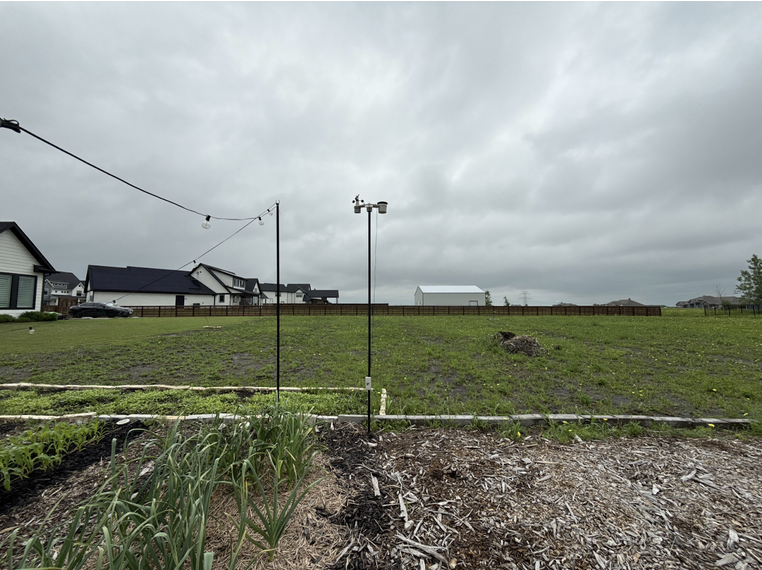 | 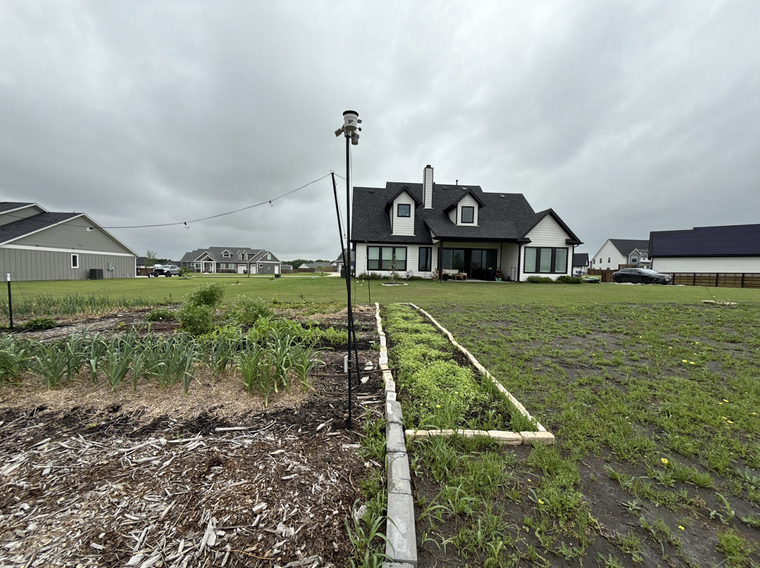 | 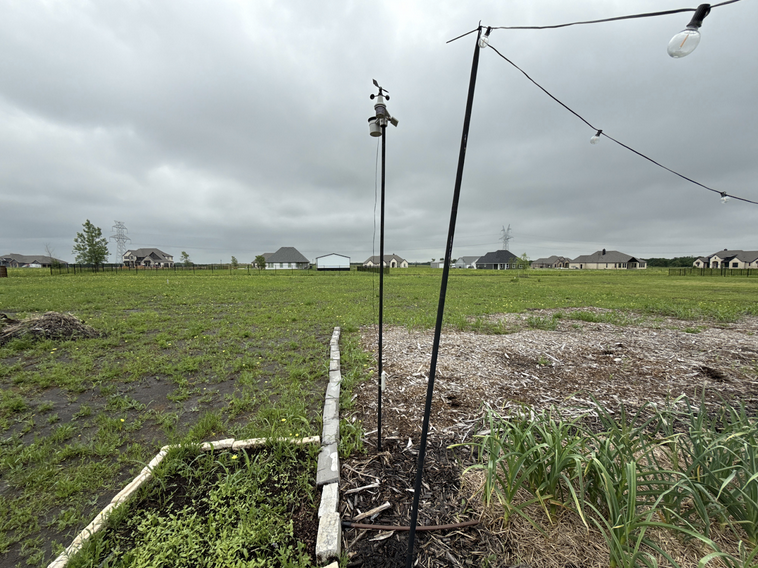 |  |
The weather station is ideally installed. These are the key points:
- It is deployed in an open area, with surrounding obstacles (e.g., buildings) located at a distance at least two/four/seven times the difference in height between the obstacle and the station. This setup eliminates any potential impact on temperature/precipitation/wind measurements
- It is mounted on mast height is appropriate (2–4 meters).
- The user has uploaded one photo per cardinal direction, each providing a wide view of the surrounding environment.
Partly Valid Photos and Short Mast
| SPV Aspect | Decision Photo 1 | Decision Photo 2 | Decision Photo 3 | Decision Photo 4 |
|---|---|---|---|---|
| Photo Validity | Partly Valid (0.5/1) | Invalid (0/1) | Partly Valid (0.5/1) | (0/1) |
| Mast Height | Low | - | Low | - |
| Mast Inclination | Not Inclined | - | Not Inclined | - |
| Temperature and RH | Biased (0/1) | - | Biased (0/1) | - |
| Wind | Small Obstacles (0.5/1) | - | Small Obstacles (0.5/1) | - |
| Precipitation | Small Obstacles (0.5/1) | - | Small Obstacles (0.5/1) | - |
| Solar Irradiance | No Obstacles (1/1) | - | No Obstacles (1/1) | - |
| Orientation | North | - | West | - |
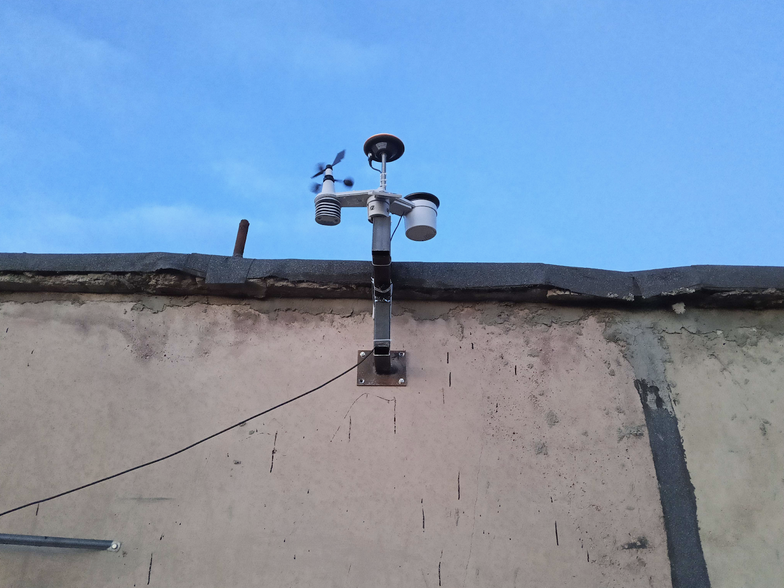 | 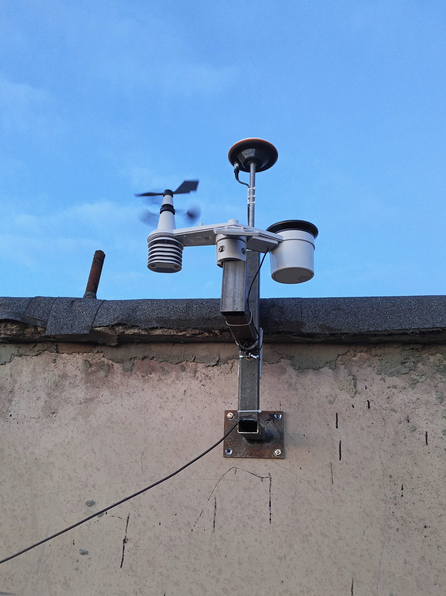 |  | - |
There are multiple issues in this SPV photo set:
- The station is mounted on a very short mast, positioning it close to the roof surface. This setup significantly affects temperature readings due to heat emitted by the concrete, leading to an overestimation of daytime temperatures. Additionally, placing the station so close to a surface usually results in underestimated wind speeds, as surface friction slows down the airflow.
- The round-shaped antenna above the station may obstruct raindrops from entering the rain gauge, potentially impacting precipitation measurements.
- The user has uploaded two photos showing the northern and western cardinal directions. These are only partially valid: in the first photo (north), the area behind the wall is not visible. In the second photo (west), half of the horizon is obscured by the wall. As a result, we cannot confirm whether additional obstacles may exist that could affect the measurements.
- A third photo, which also shows part of the northern horizon, is practically unusable and is therefore marked as invalid.
- Finally, there are no photos showing the eastern and southern directions, meaning these two cardinal points will be graded with a score of 0.
Short Mast, Chimney and Obstacles
| SPV Aspect | Decision Photo 1 | Decision Photo 2 | Decision Photo 3 | Decision Photo 4 |
|---|---|---|---|---|
| Photo Validity | Valid (1/1) | Valid (1/1) | Valid (1/1) | Valid (1/1) |
| Mast Height | Mid | Mid | Mid | Mid |
| Mast Inclination | Not Inclined | Not Inclined | Not Inclined | Not Inclined |
| Temperature and RH | Partly Affected (0.5/1) | Partly Affected (0.5/1) | Partly Affected (0.5/1) | Partly Affected (0.5/1) |
| Wind | Significant Obstacles (0/1) | No Obstacles (1/1) | Significant Obstacles (0/1) | Small Obstacles (0.5/1) |
| Precipitation | Small Obstacles (0.5/1) | No Obstacles (1/1) | Small Obstacles (0.5/1) | Small Obstacles (0.5/1) |
| Solar Irradiance | No Obstacles (1/1) | No Obstacles (1/1) | Significant Obstacles (0/1) | Small Obstacles (0.5/1) |
| Orientation | North | West | East | South |
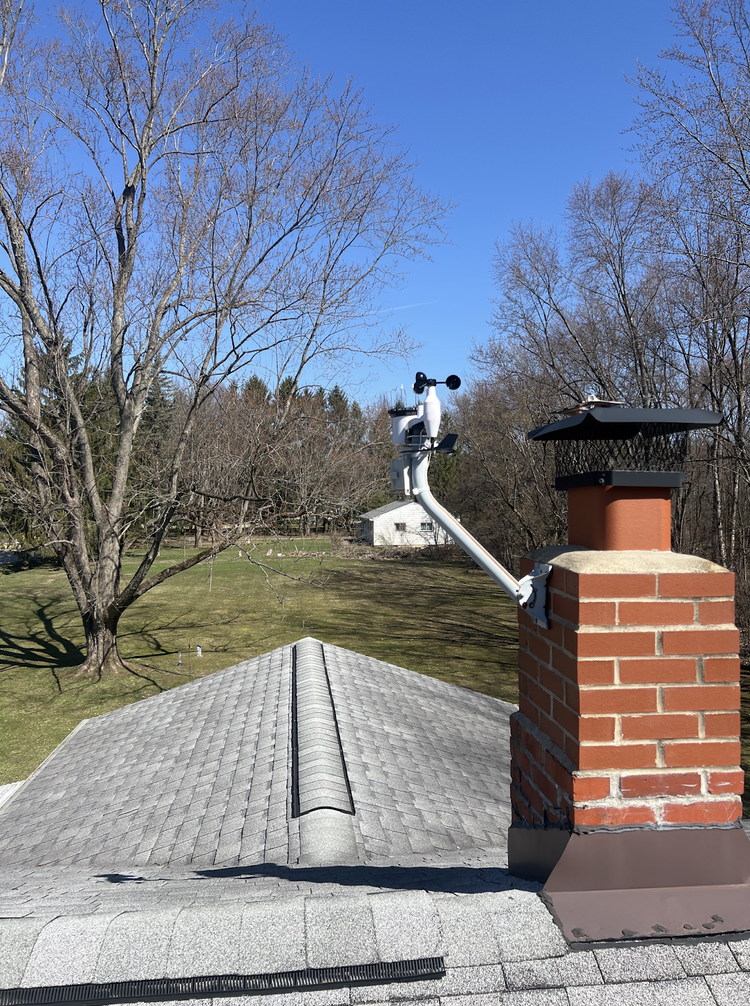 | 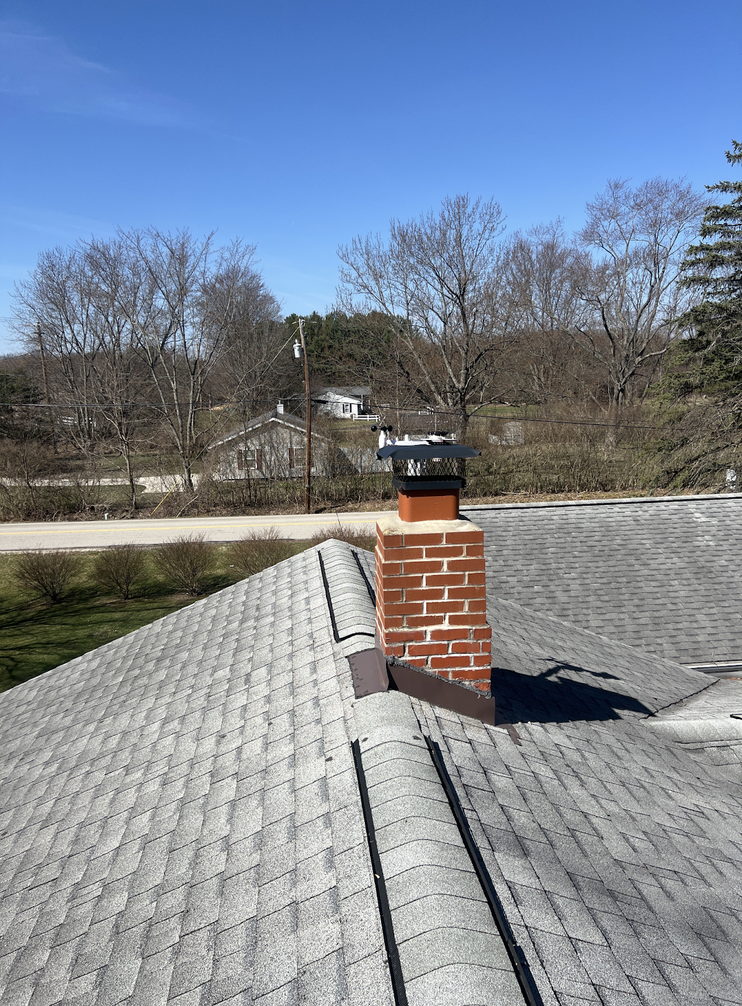 | 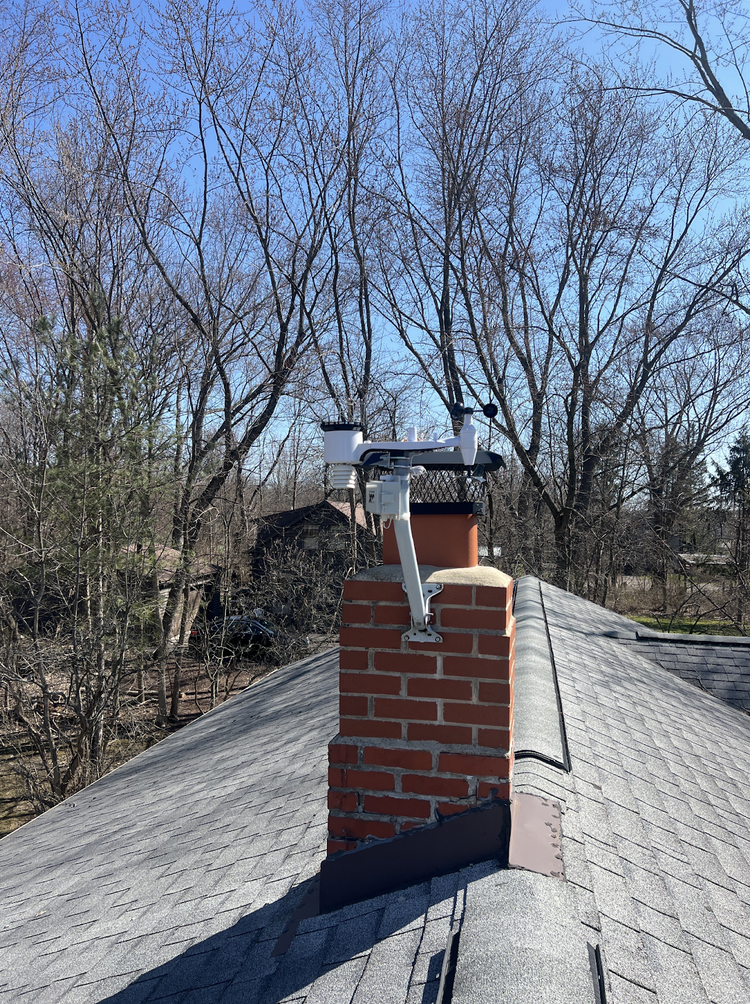 | 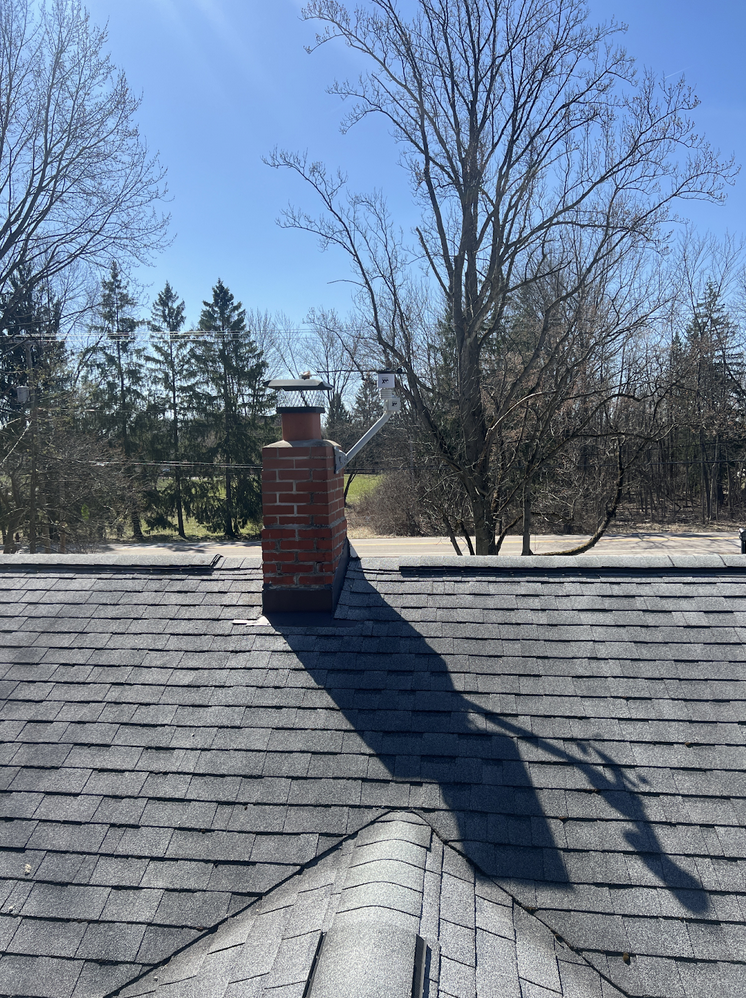 |
This is an apparently satisfactory deployment. And it should be noted that, although the photos are in portrait mode, they adequately capture the surrounding area. However, there is a series of issues, which are:
- The station is mounted on a mast that provides approximately 1 meter distance from the roof. However, the mast is installed on top of a chimney, which, along with the limited distance, can introduce errors in temperature, humidity, and wind measurements under certain conditions.
- The trees located to the north, south, and especially the east are particularly tall and relatively close to the station. This setup can significantly affect wind measurements, as well as precipitation readings when rain is accompanied by wind from those directions. It may also interfere with solar radiation measurements due to shading.
Insufficient Number of Photos and Short Mast
| SPV Aspect | Decision Photo 1 | Decision Photo 2 | Decision Photo 3 | Decision Photo 4 |
|---|---|---|---|---|
| Photo Validity | Valid (1/1) | Valid | (0/1) | (0/1) |
| Mast Height | Low | Low | - | - |
| Mast Inclination | Not Inclined | Not Inclined | - | - |
| Temperature and RH | Biased (0/1) | Biased (0/1) | - | - |
| Wind | Small Obstacles (0.5/1) | No Obstacles (1/1) | - | - |
| Precipitation | No Obstacles (1/1) | No Obstacles (1/1) | - | - |
| Solar Irradiance | Small Obstacles (0.5/1) | No Obstacles (1/1) | - | - |
| Orientation | West | East | - | - |
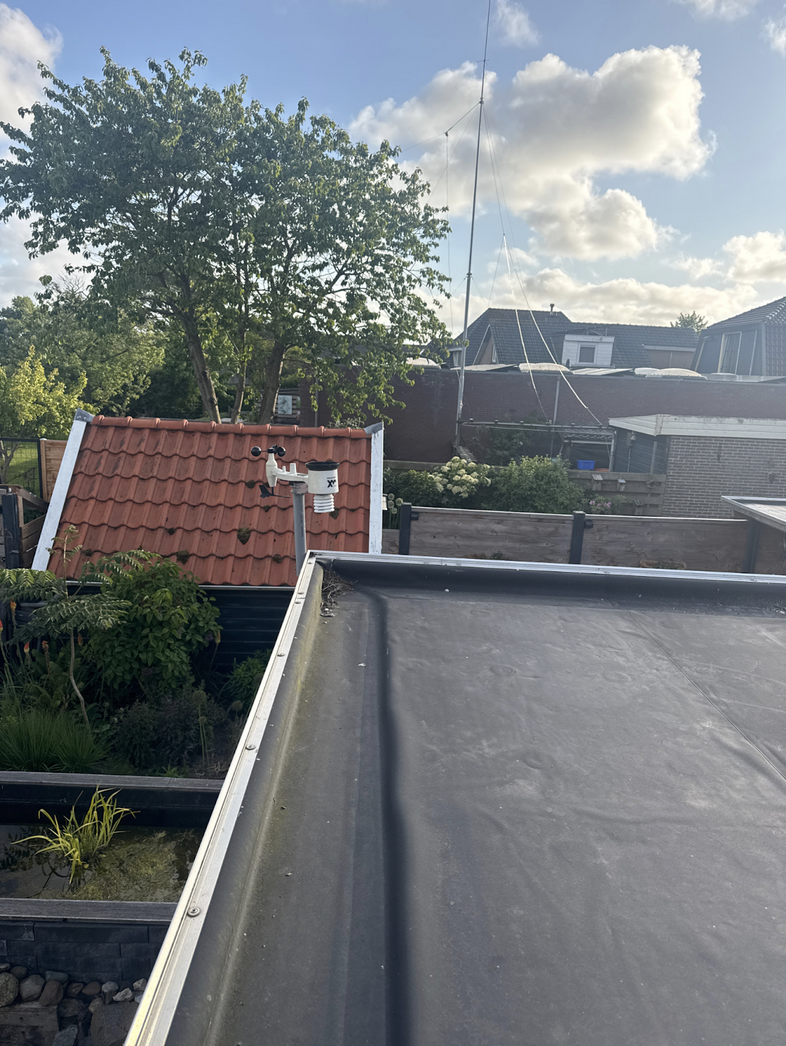 | 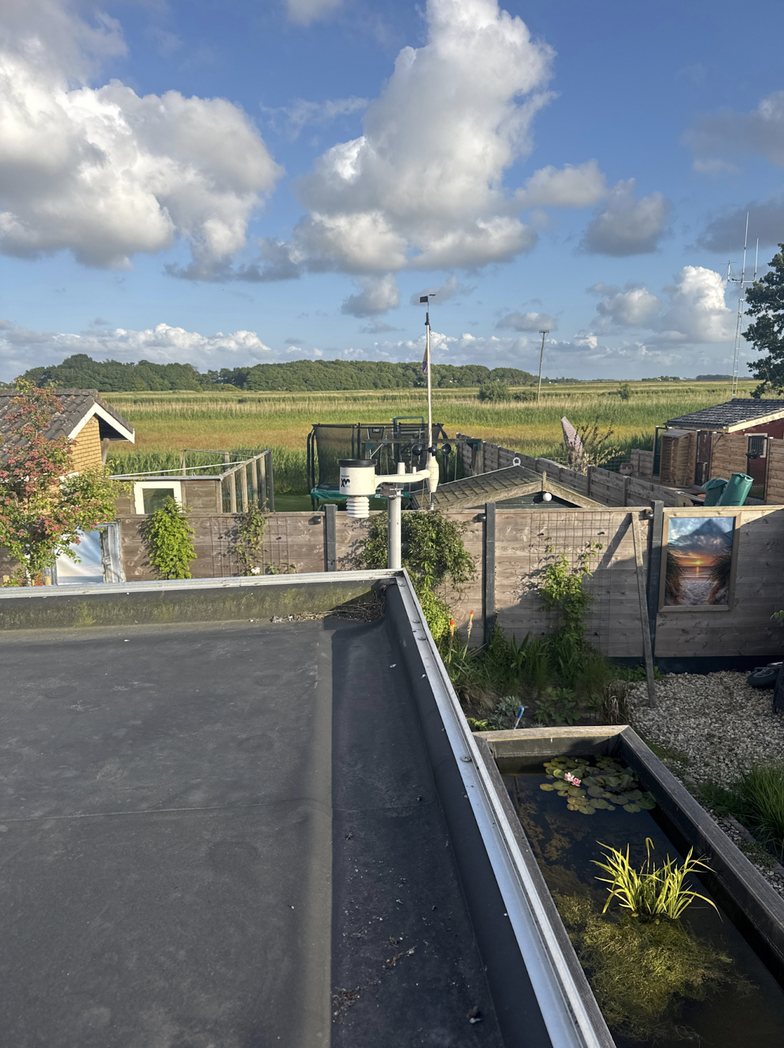 | - | - |
This particular station appears to fail to meet several of the SPV mechanism’s criteria:
- The station is mounted on a short mast over a black surface. The temperature measurements, especially during the day, are significantly affected. At the same time, the airflow may be influenced by the building on which the station is mounted
- There are also trees nearby that may affect both the airflow and block sunlight from reaching the solar radiation sensor.
- Although, in the photo depicting the eastern horizon, the problem with airflow still exists, since the horizon is generally open without obstacles, we give the user a small boost by scoring the wind aspect for this point of the horizon with a 1.
- The photos do not depict the entire western and eastern horizons, but they are sufficient to give us a clear picture of the surrounding area. However, there are no photos depicting the northern and southern horizons, which prevents the user from achieving a better score.
Missing Rain Gauge Cup and Photos
| SPV Aspect | Decision Photo 1 | Decision Photo 2 | Decision Photo 3 | Decision Photo 4 |
|---|---|---|---|---|
| Photo Validity | Valid (1/1) | Valid (1/1) | (0/1) | (0/1) |
| Mast Height | Proper | Proper | - | - |
| Mast Inclination | Not Inclined | Not Inclined | - | - |
| Temperature and RH | Valid (1/1) | Valid (1/1) | - | - |
| Wind | No Obstacles (1/1) | No Obstacles (1/1) | - | - |
| Precipitation | No Obstacles (1/1) | No Obstacles (1/1) | - | - |
| Solar Irradiance | Significant Obstacles (0/1) | Significant Obstacles (0/1) | - | - |
| Orientation | East | South | - | - |
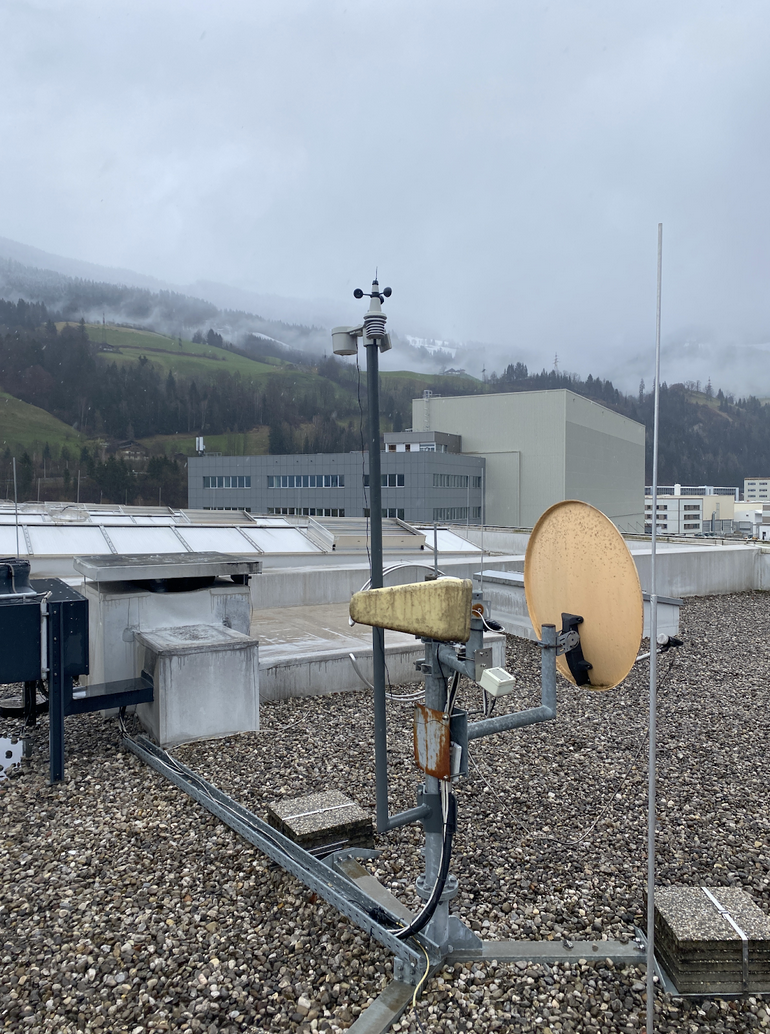 | 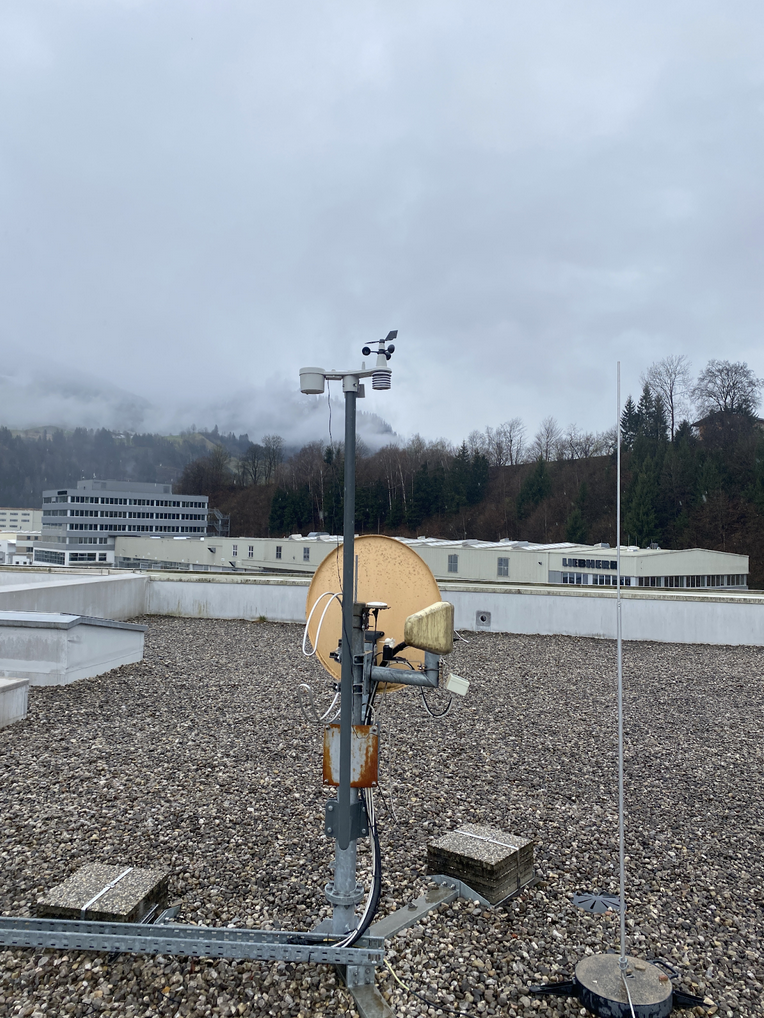 | - | - |
This appears to be a correctly installed weather station. However, there are two critical points that prevent it from receiving an excellent score:
- The absence of photos depicting the remaining points of the horizon (north and west).
- The black cap of the rain gauge is missing, resulting in it recording almost no measurements.
Missing Photos
| SPV Aspect | Decision Photo 1 | Decision Photo 2 | Decision Photo 3 | Decision Photo 4 |
|---|---|---|---|---|
| Photo Validity | Partly Valid (0.5/1) | Valid (1/1) | Valid (1/1) | (0/1) |
| Mast Height | Proper | Proper | Proper | - |
| Mast Inclination | Not Inclined | Not Inclined | Not Inclined | - |
| Temperature and RH | Valid (1/1) | Valid (1/1) | Valid (1/1) | - |
| Wind | No Obstacles (1/1) | No Obstacles (1/1) | No Obstacles (1/1) | - |
| Precipitation | No Obstacles (1/1) | No Obstacles (1/1) | No Obstacles (1/1) | - |
| Solar Irradiance | No Obstacles (1/1) | No Obstacles (1/1) | No Obstacles (1/1) | - |
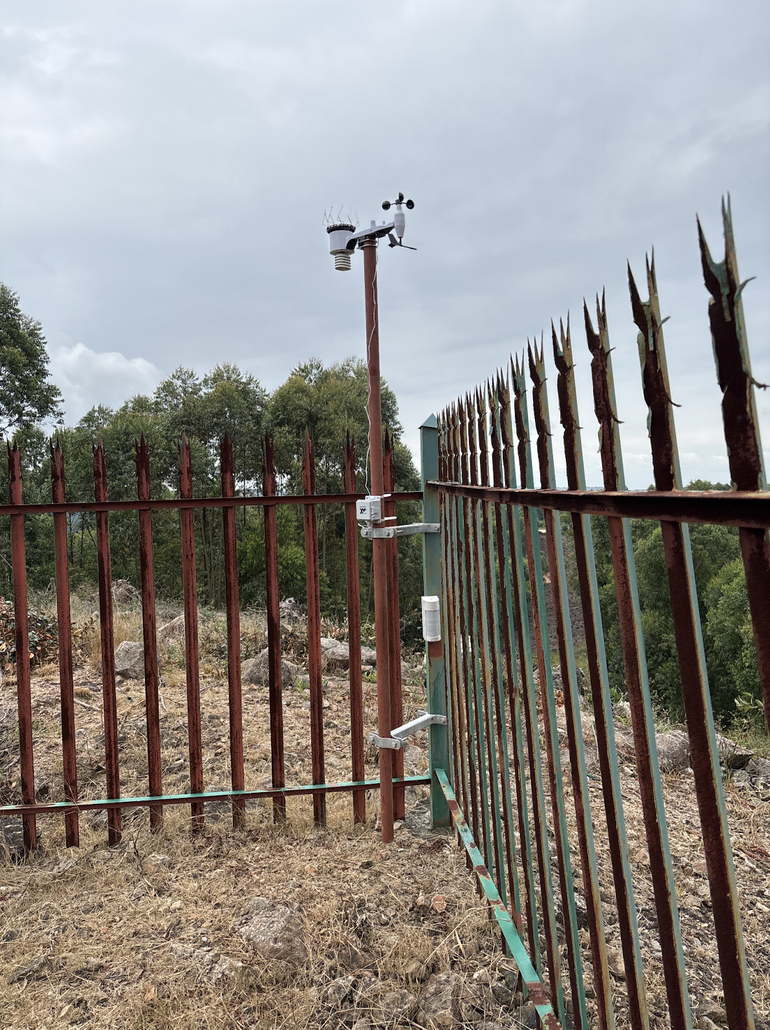 | 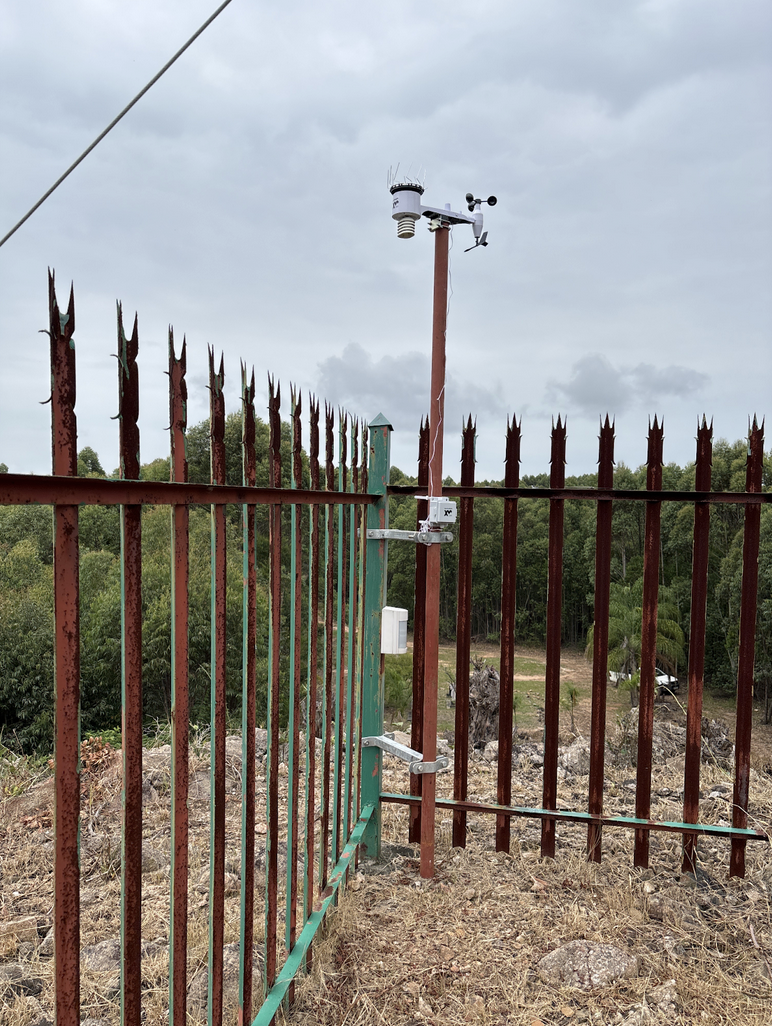 | 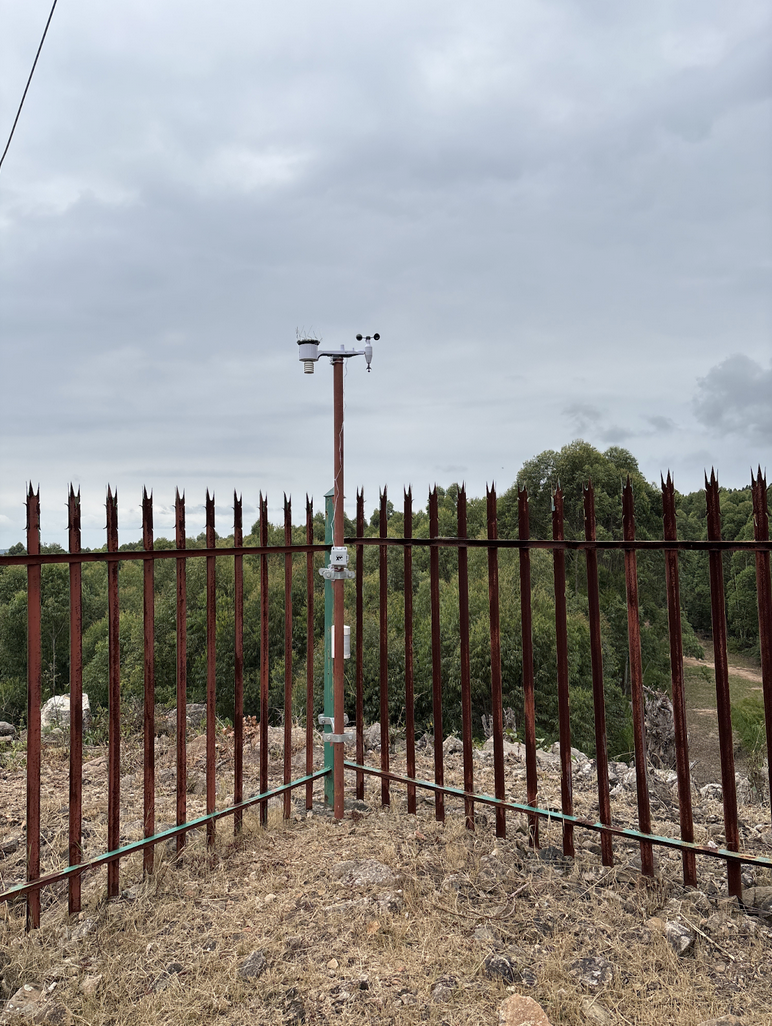 | - |
This station could have received the maximum score, but once again, it is the details that prevent the user from achieving a perfect rating:
- The three photos show almost a 180° range around the station. Although the photo depicting the south actually shows only part of it, it can be concluded that the horizon is clear of obstacles. This is not the case in the photo showing the northern horizon, where some nearby trees are visible. Ideally, we would want a photo covering the north.
- There is no photo showing the west at all. There could be a large tree or wall significantly affecting the station’s measurements. Although the station appears to be installed quite correctly, the inadequate depiction of the surrounding environment prevents the user from obtaining the maximum SPV score.
Missing Weather Station from Photos
| SPV Aspect | Decision Photo 1 | Decision Photo 2 | Decision Photo 3 | Decision Photo 4 |
|---|---|---|---|---|
| Photo Validity | Invalid (0/1) | Invalid (0/1) | Invalid (0/1) | (0/1) |
| Mast Height | - | - | - | - |
| Mast Inclination | - | - | - | - |
| Temperature and RH | - | - | - | - |
| Wind | - | - | - | - |
| Precipitation | - | - | - | - |
| Solar Irradiance | - | - | - | - |
| Orientation | - | - | - | - |
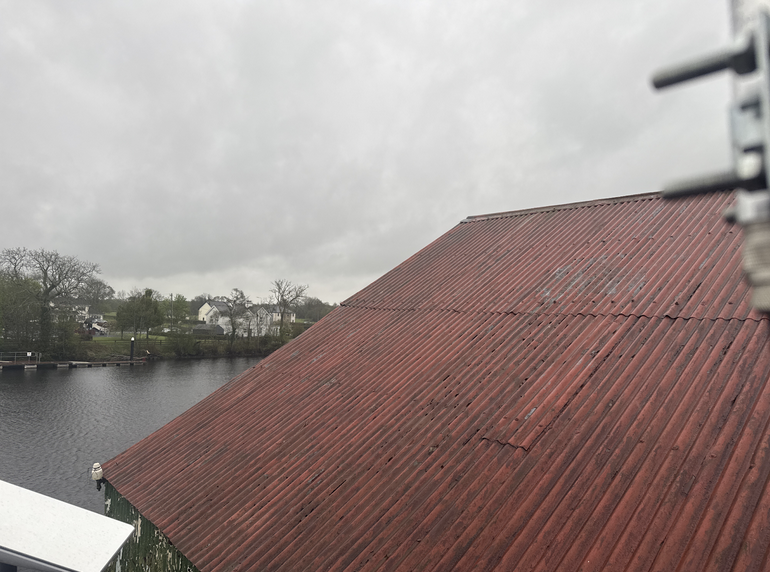 | 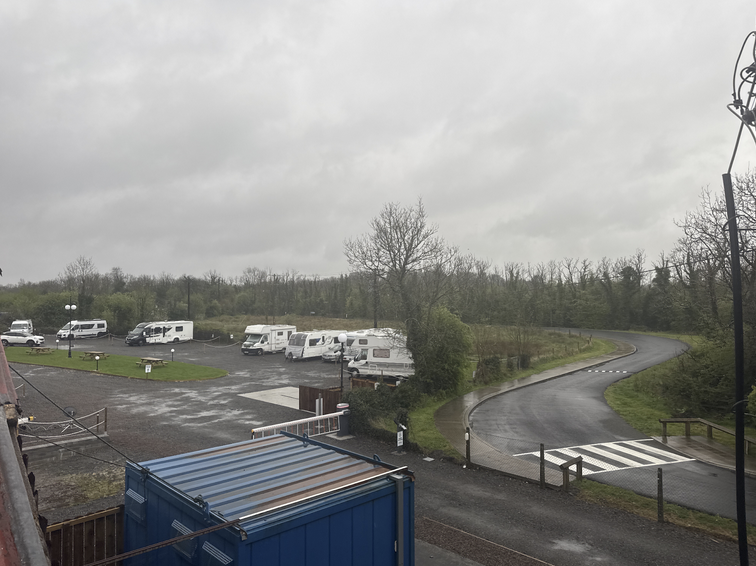 |  | - |
This may be the perfect installation. However:
- The station is not visible in any of the photos. This means that we do not know which point of the horizon each photo depicts, the exact location and height of the station, or whether the location shown is indeed that of the station.
- In any case, we need four photos, one for each point of the horizon.
Short Mast and Missing Photos
| SPV Aspect | Decision Photo 1 | Decision Photo 2 | Decision Photo 3 | Decision Photo 4 |
|---|---|---|---|---|
| Photo Validity | Partly Valid (0.5/1) | Partly Valid (0.5/1) | - (0/1) | - (0/1) |
| Mast Height | Low | Low | - | - |
| Mast Inclination | Not Inclined | Not Inclined | - | - |
| Temperature and RH | Biased (0/1) | Biased (0/1) | - | - |
| Wind | Small Obstacles (0.5/1) | Small Obstacles (0.5/1) | - | - |
| Precipitation | No Obstacles (1/1) | No Obstacles (1/1) | - | - |
| Solar Irradiance | No Obstacles (1/1) | No Obstacles (1/1) | - | - |
| Orientation | West | South | - | - |
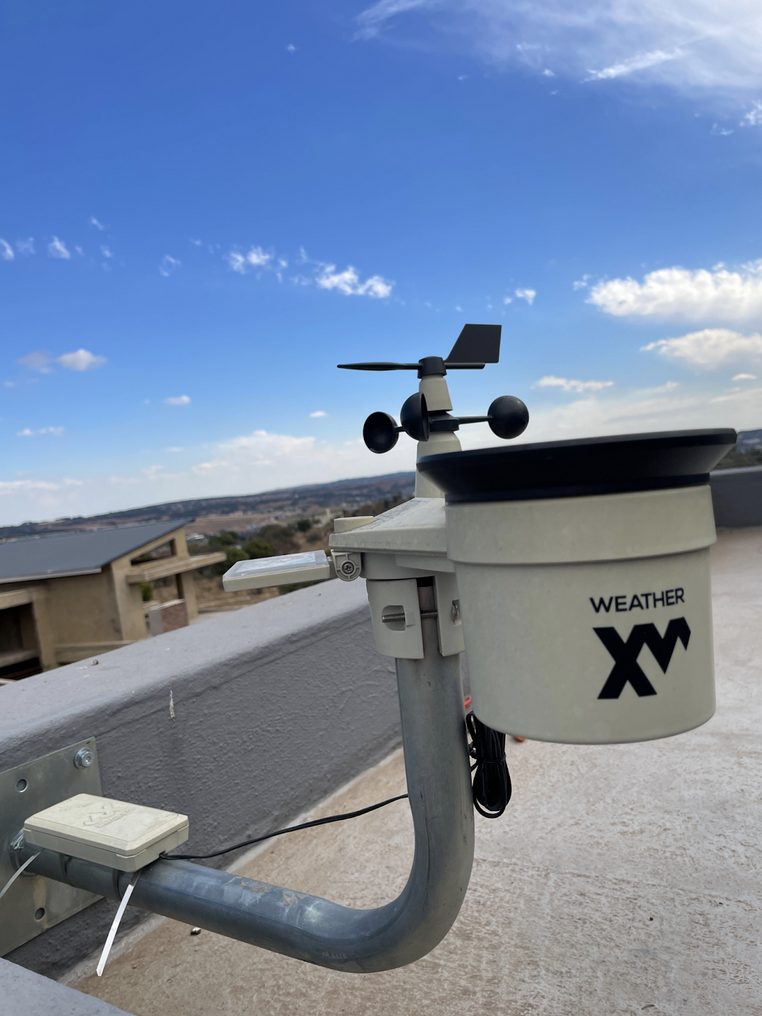 | 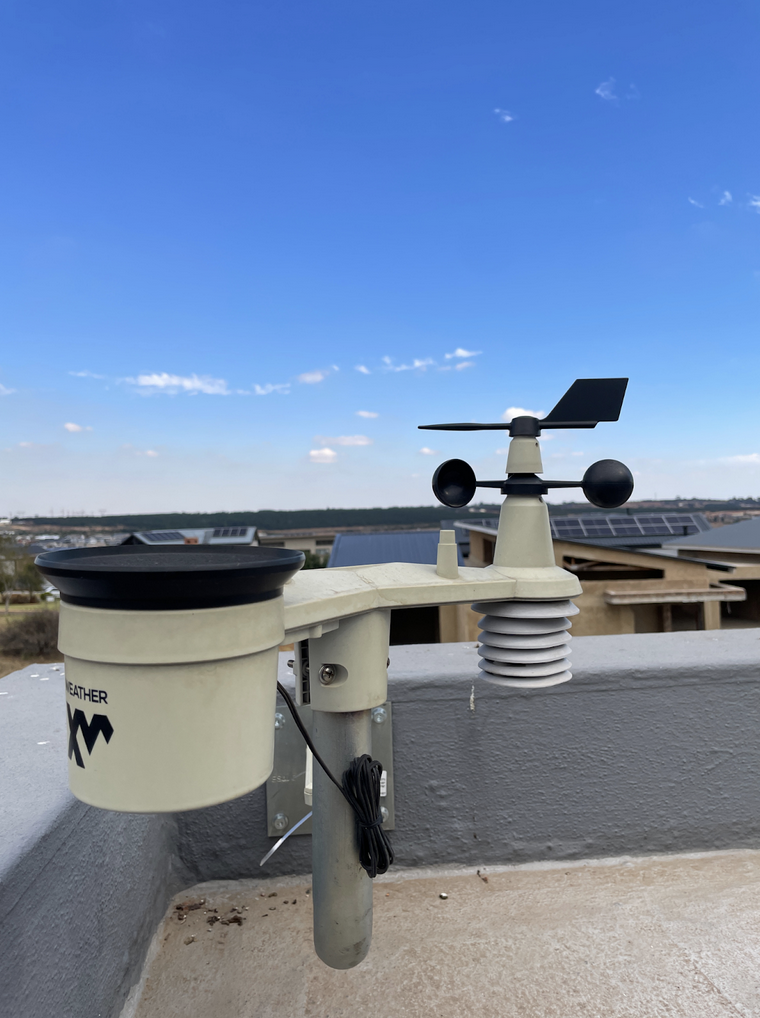 | - | - |
Rooftops are among the best places to install a station in urban environments; however, all basic installation requirements must be met. In this particular case:
- The station is mounted on a very short mast in front of a ledge. This means it is heavily affected by heat from the concrete surfaces, while its proximity to the floor and the ledge increases surface roughness, slowing down or even altering the direction of airflow.
- There are no photos for all points of the horizon, which does not allow the reviewer to fully assess the station’s surrounding environment.
- This appears to be a potentially excellent installation site, but due to carelessness, the station misses out on a perfect score.
Two Photos - Two Aspects
| SPV Aspect | Decision Photo 1 | Decision Photo 2 | Decision Photo 3 | ------------------- |
|---|---|---|---|---|
| Photo Validity | Valid (1/1) | Valid (1/1) | - (0/1) | - (0/1) |
| Mast Height | Proper | Proper | - | - |
| Mast Inclination | Not Inclined | Not Inclined | - | - |
| Temperature and RH | Partly Affected (0.5) | Biased (0/1) | - | - |
| Wind | No Obstacles (1/1) | Significant Obstacles (0/1) | - | - |
| Precipitation | No Obstacles (1/1) | Significant Obstacles (0/1) | - | - |
| Solar Irradiance | No Obstacles (1/1) | Significant Obstacles (0/1) | - | - |
| Orientation | West | East | - | - |
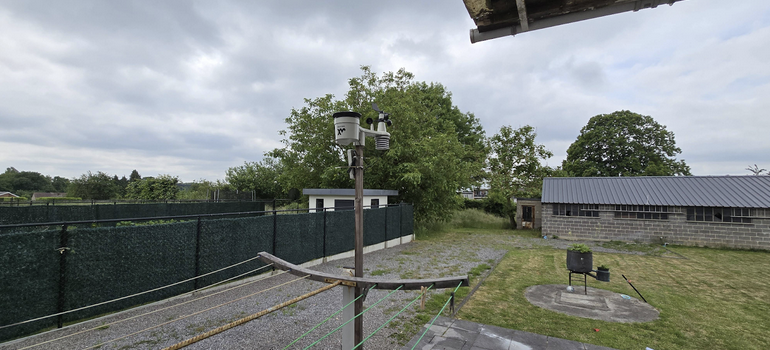 | 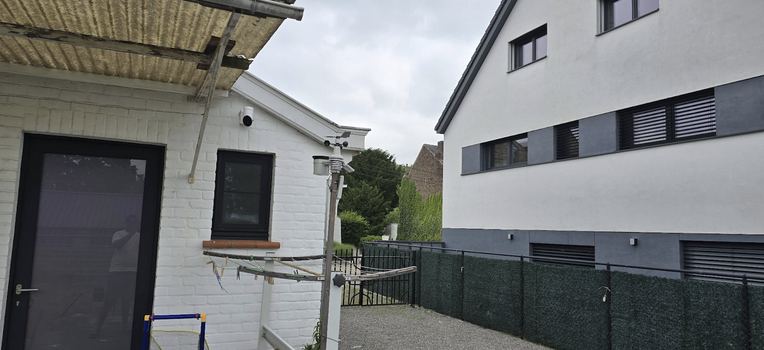 | - | - |
This station is installed in a poor location, and not all the photos are informative:
- One photo shows an open horizon without obstacles; however, a roof appears at the top of the image, which may “shield” the station under certain conditions.
- The other photo confirms what we suspected from the first one. There is a canopy almost directly above the station, a wall very close by, and to the right, a fairly tall building at a short distance. Here, the walls will add extra heat, causing erroneous temperature measurements, while in combination with the roof, the airflow is blocked from multiple directions, making the wind measurements completely unreliable.
Station within Backyards
| SPV Aspect | Decision Photo 1 | Decision Photo 2 | Decision Photo 3 | Decision Photo 4 |
|---|---|---|---|---|
| Photo Validity | Partly Valid (0.5) | Valid (1/1) | - (0/1) | - (0/1) |
| Mast Height | Proper | Proper | - | - |
| Mast Inclination | Not Inclined | Not Inclined | - | - |
| Temperature and RH | Partly Affected (0.5) | Partly Affected (0.5) | - | - |
| Wind | Significant Obstacles (0/1) | Small Obstacles (0.5) | - | - |
| Precipitation | No Obstacles (1/1) | No Obstacles (1/1) | - | - |
| Solar Irradiance | Small Obstacles (0.5) | No Obstacles (1/1) | - | - |
| Orientation | West | North | - | - |
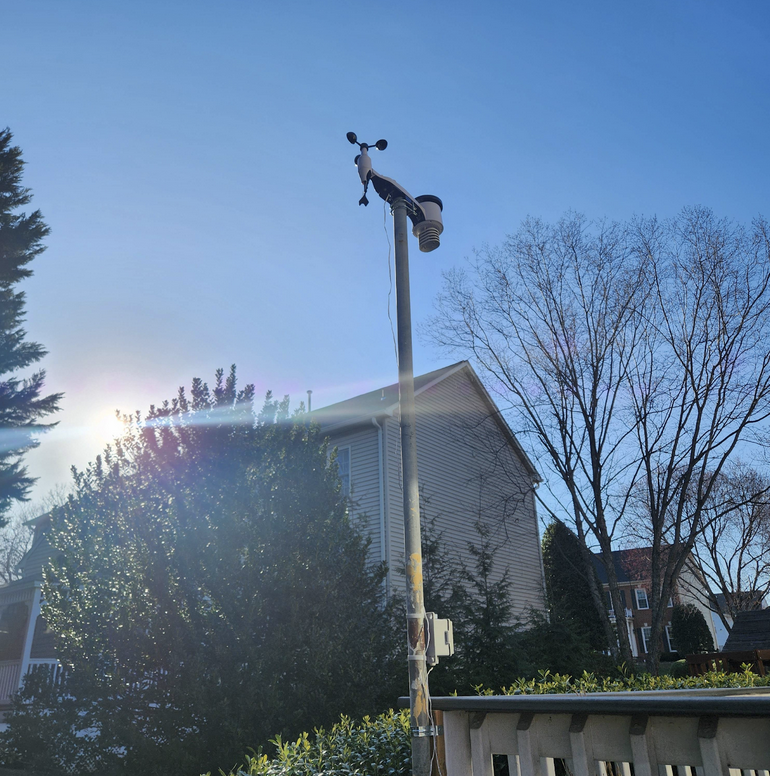 | 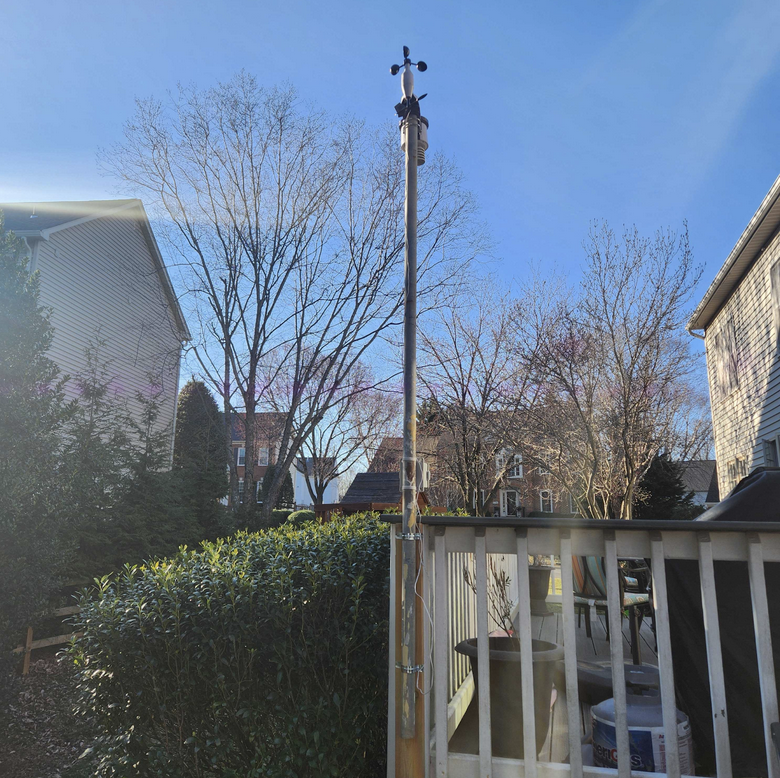 | - | - |
This station is located between buildings and their courtyards, which creates various problems:
Large trees create wind shade, while the air can be funnelled between the buildings, causing the station to record a completely different wind direction and speed from the prevailing conditions in the area.
- Because the airflow can be significantly obstructed, the temperature of the air around the station differs from that of the free-flowing air. It may also be affected by the presence of nearby buildings.
- Here as well, photos for all points of the horizon are not available.
The Underrated Weather Station
| SPV Aspect | Decision Photo 1 | Decision Photo 2 | Decision Photo 3 | Decision Photo 4 |
|---|---|---|---|---|
| Photo Validity | Partly Valid (0.5/1) | Invalid (0/1) | - (0/1) | - (0/1) |
| Mast Height | Proper | - | - | - |
| Mast Inclination | Not Inclined | - | - | - |
| Temperature and RH | Valid | - | - | - |
| Wind | No Obstacles (1/1) | - | - | - |
| Precipitation | No Obstacles (1/1) | - | - | - |
| Solar Irradiance | No Obstacles (1/1) | - | - | - |
| Orientation | West | - | - | - |
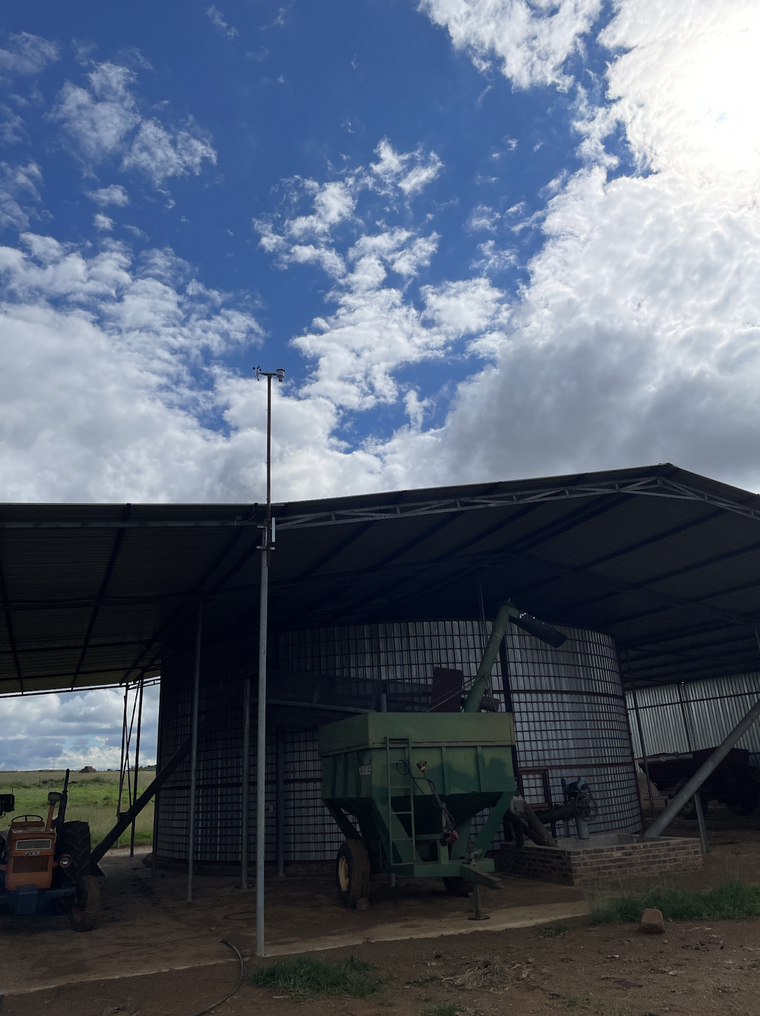 |  | - | - |
This is probably an underrated station because:
- The user did not upload one photo for each point of the horizon.
- The photo showing the north is quite zoomed in, making it impossible to see the surrounding area.
- However, the single valid photo shows a potentially well-positioned station, but the photos needed to confirm this are missing.
A Rough Installation
| SPV Aspect | Decision Photo 1 | Decision Photo 2 | Decision Photo 3 | Decision Photo 4 |
|---|---|---|---|---|
| Photo Validity | Invalid (0/1) | Valid (1/1) | Valid (1/1) | Partly Valid (0.5/1) |
| Mast Height | - | Mid | Mid | Mid |
| Mast Inclination | - | Inclined | Inclined | Inclined |
| Temperature and RH | - | Partly Affected (0.5/1) | Partly Affected (0.5/1) | Partly Affected (0.5/1) |
| Wind | - | Small Obstacles (0.5/1) | Small Obstacles (0.5/1) | Small Obstacles (0.5/1) |
| Precipitation | - | No Obstacles (1/1) | No Obstacles (1/1) | Small Obstacles (0.5/1) |
| Solar Irradiance | - | No Obstacles (1/1) | No Obstacles (1/1) | Significant Obstacles (0/1) |
| Orientation | - | North | East | West |
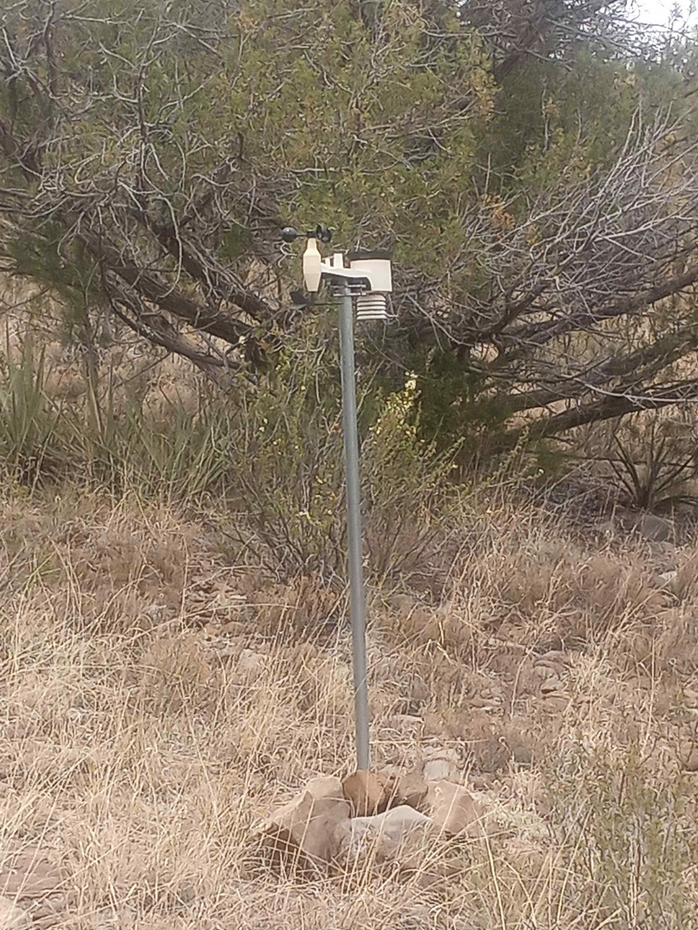 | 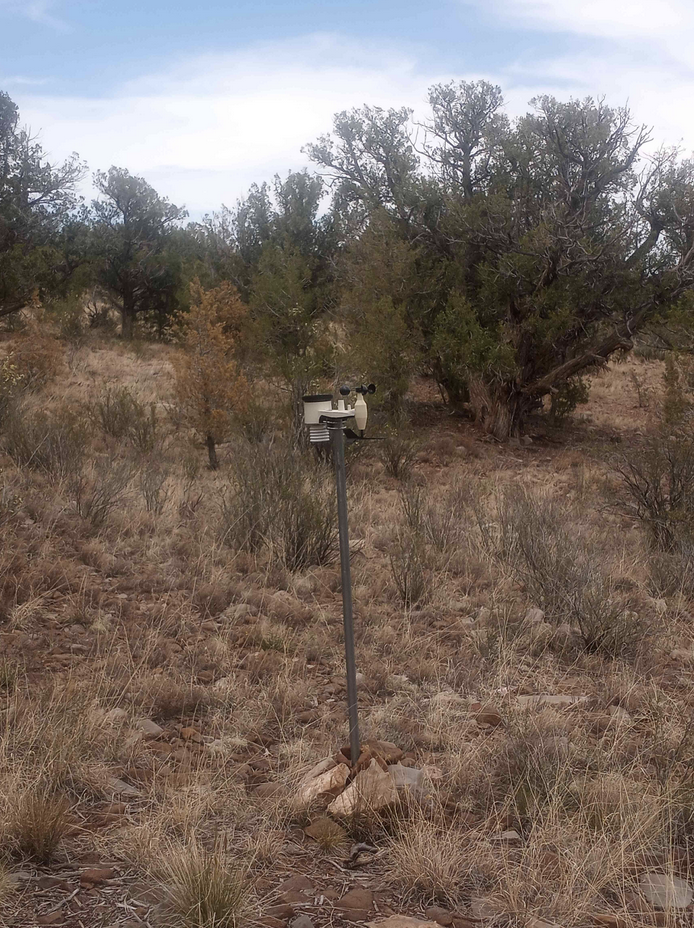 | 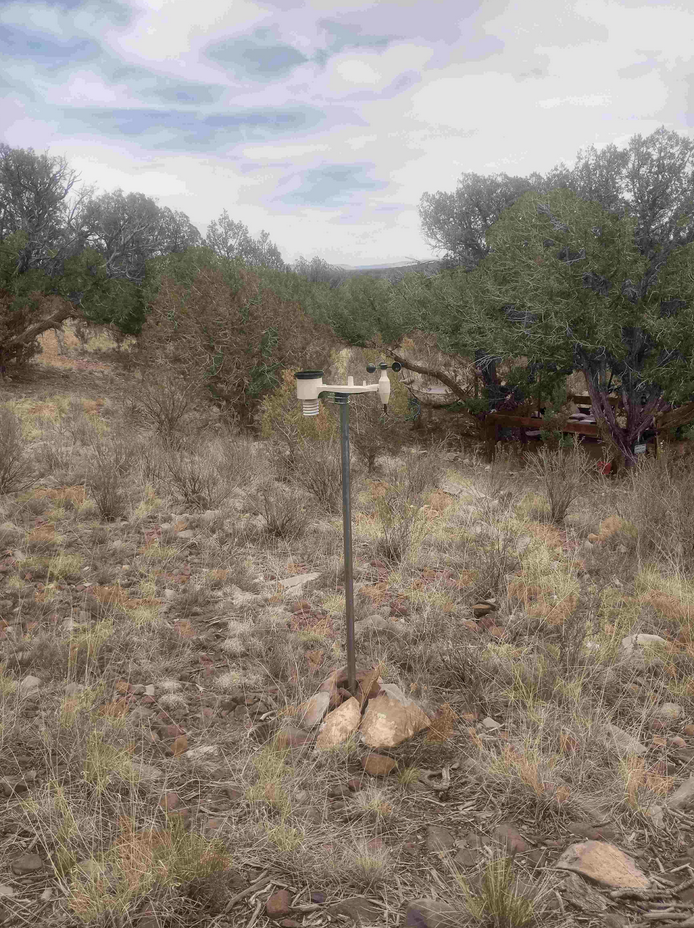 | 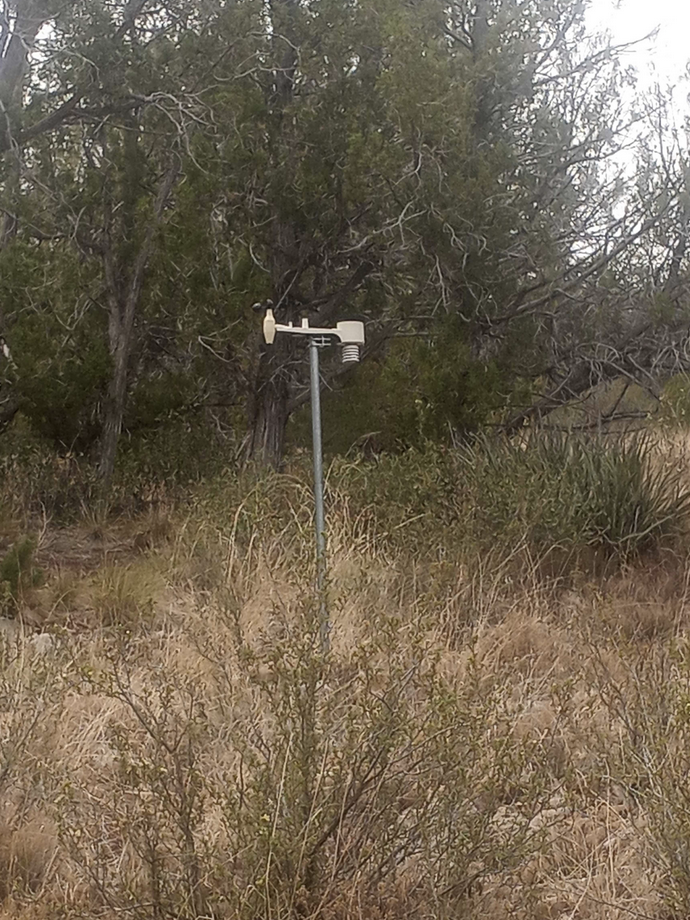 |
This station is located in an interesting area but installed in a very hasty manner:
- Two photos show the same point of the horizon.
- In the other photos, the mast appears to be tilted. However, the main reason the solar radiation measurements are invalid is that the station is positioned lower than the tops of the surrounding trees, which shade it.
- The nearby trees certainly cause wind shading, and in particular, the tree to the west is so close that rainfall may not be recorded correctly when the wind is from the west. The mast is poorly fixed and may wobble, preventing reliable wind measurements.
- The station is poorly secured and quite low, meaning the temperature may be significantly influenced by the ground.
A Chimney Station
| SPV Aspect | Decision Photo 1 | Decision Photo 2 | Decision Photo 3 | Decision Photo 4 |
|---|---|---|---|---|
| Photo Validity | Valid (1/1) | Invalid (0/1) | Valid (1/1) | Partly Valid (0.5/1) |
| Mast Height | Mid | - | Mid | Mid |
| Mast Inclination | Not Inclined | - | Not Inclined | Not Inclined |
| Temperature and RH | Partly Affected (0.5/1) | - | Partly Affected (0.5/1) | Partly Affected (0.5/1) |
| Wind | Small Obstacles (0.5/1) | - | Small Obstacles (0.5/1) | Small Obstacles (0.5/1) |
| Precipitation | No Obstacles (1/1) | - | No Obstacles (1/1) | No Obstacles (1/1) |
| Solar Irradiance | No Obstacles (1/1) | - | No Obstacles (1/1) | No Obstacles (1/1) |
| Orientation | South | - | West | North |
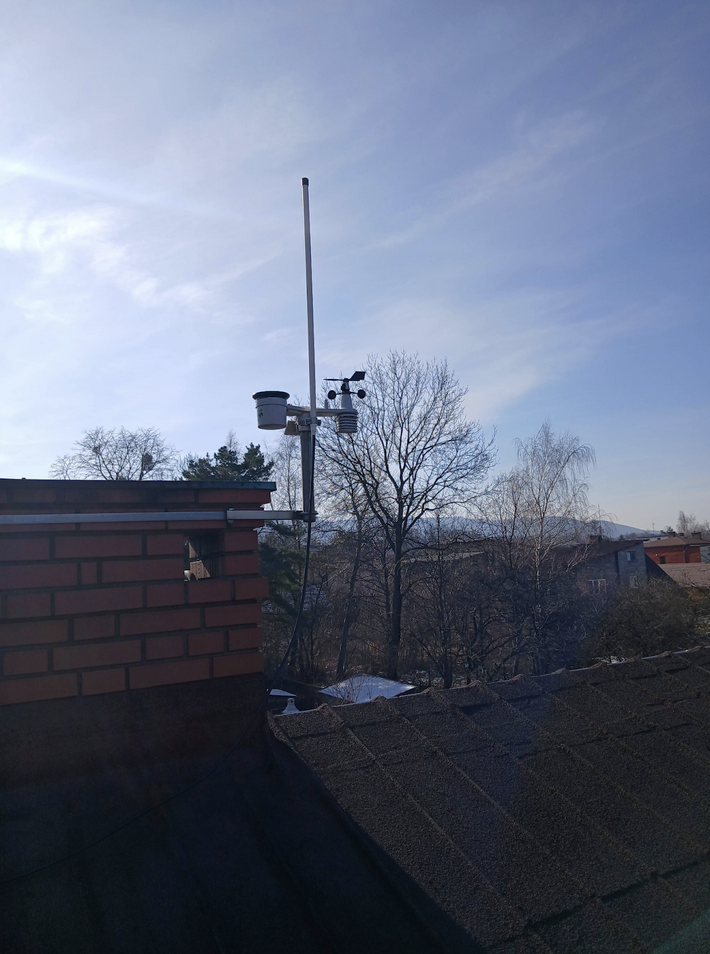 | 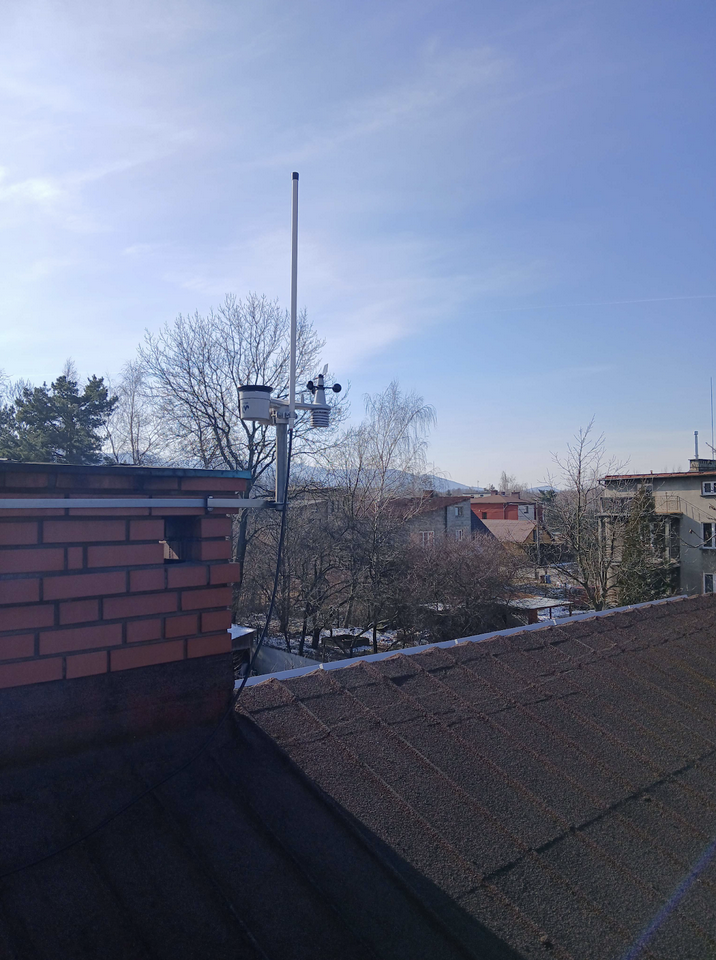 |  |  |
This station could have been among the excellent ones, but there are reasons why this is not the case:
- The station is very close to a chimney, which means that when the chimney is active, the temperature readings will be incorrect. The chimney may be permanently inactive, but this is something the reviewer cannot know.
- In addition, the station is very close to the chimney wall, which can cause various turbulent flows that may prevent accurate wind measurement.
The "Hidden" Station
| SPV Aspect | Decision Photo 1 | Decision Photo 2 | Decision Photo 3 | Decision Photo 4 |
|---|---|---|---|---|
| Photo Validity | Partly Valid (0.5/1) | Partly Valid (0.5/1) | Partly Valid (0.5/1) | Partly Valid (0.5/1) |
| Mast Height | Low | Low | Low | Low |
| Mast Inclination | Not Inclined | Not Inclined | Not Inclined | Not Inclined |
| Temperature and RH | Biased (0/1) | Biased (0/1) | Biased (0/1) | Biased (0/1) |
| Wind | Significant Obstacles (0/1) | Significant Obstacles (0/1) | Significant Obstacles (0/1) | Significant Obstacles |
| Precipitation | Significant Obstacles (0/1) | Significant Obstacles (0/1) | Significant Obstacles (0/1) | Significant Obstacles |
| Solar Irradiance | Significant Obstacles (0/1) | Significant Obstacles (0/1) | Significant Obstacles (0/1) | Significant Obstacles (0/1) |
| Orientation | East | North | South | West |
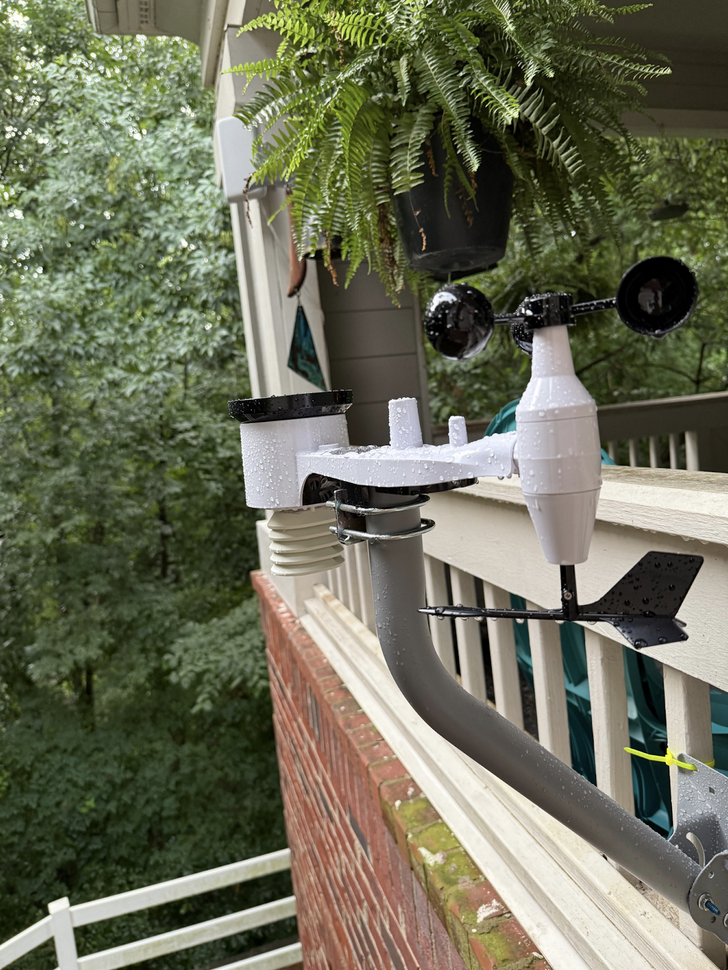 | 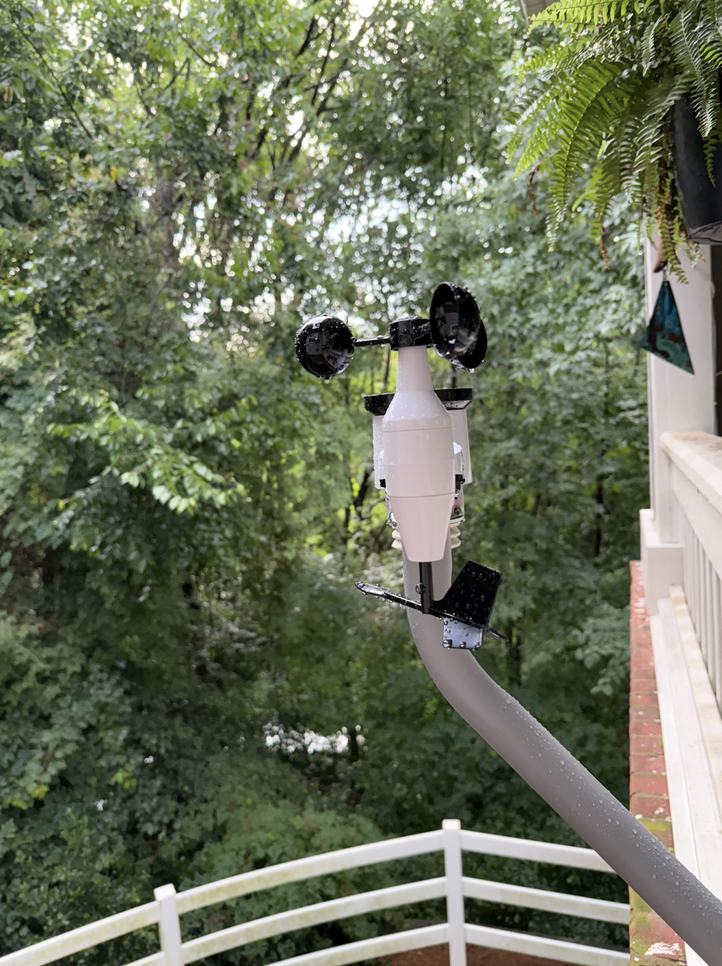 | 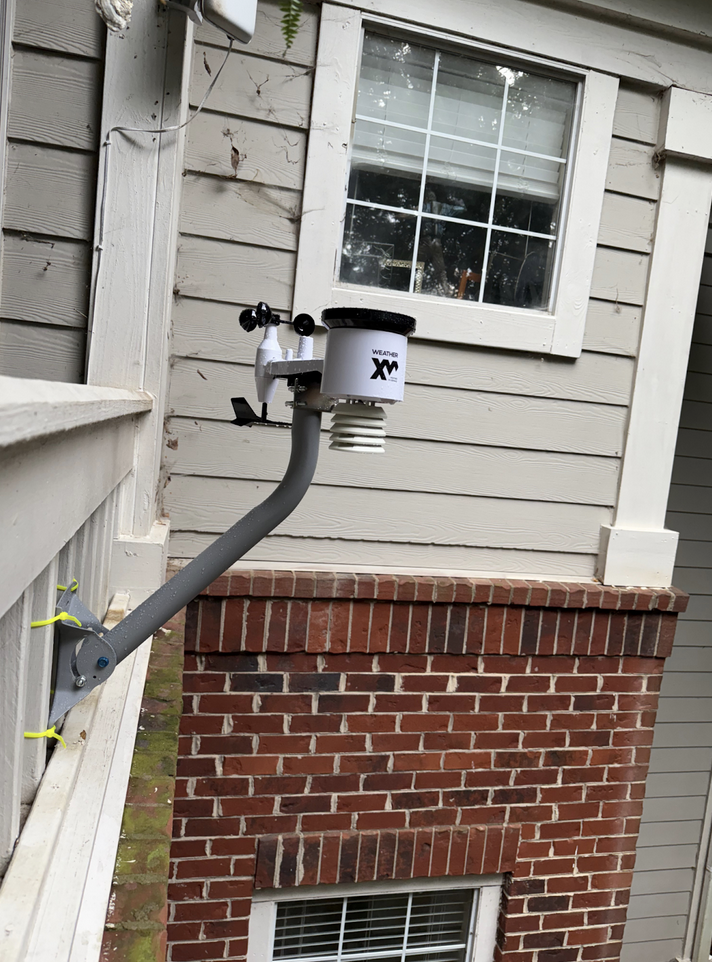 | 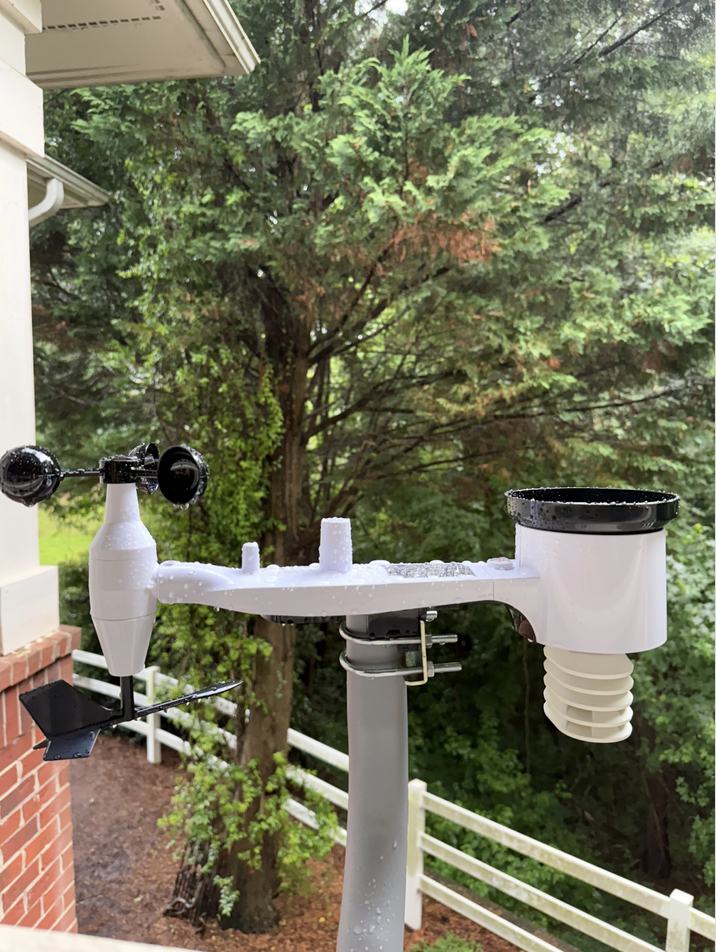 |
This station is clearly tucked inside a forest, placed on the balcony of a house, and this creates multiple problems:
- With many walls around it, the air cannot circulate freely, and some of these walls may heat up during the day, warming the adjacent air.
- The surrounding vegetation is dense, and in practice, the wind blowing in the area has little to do with what the station measures. At the same time, the tree canopy prevents a significant portion of precipitation from reaching the rain gauge.
- The dense vegetation also prevents accurate measurement of solar radiation.
The perfectly Imperfect
| SPV Aspect | Decision Photo 1 | Decision Photo 2 | Decision Photo 3 | Decision Photo 4 |
|---|---|---|---|---|
| Photo Validity | Valid (1/1) | Valid (1/1) | - (0/1) | - (0/1) |
| Mast Height | Over | Over | - | - |
| Mast Inclination | Not Inclined | Not Inclined | - | - |
| Temperature and RH | Valid (1/1) | Valid (1/1) | - | - |
| Wind | Small Obstacles (0.5/1) | Small Obstacles (0.5/1) | - | - |
| Precipitation | Significant Obstacles (0/1) | Significant Obstacles (0/1) | - | - |
| Solar Irradiance | No Obstacles (1/1) | No Obstacles (1/1) | - | - |
| Orientation | North | West | - | - |
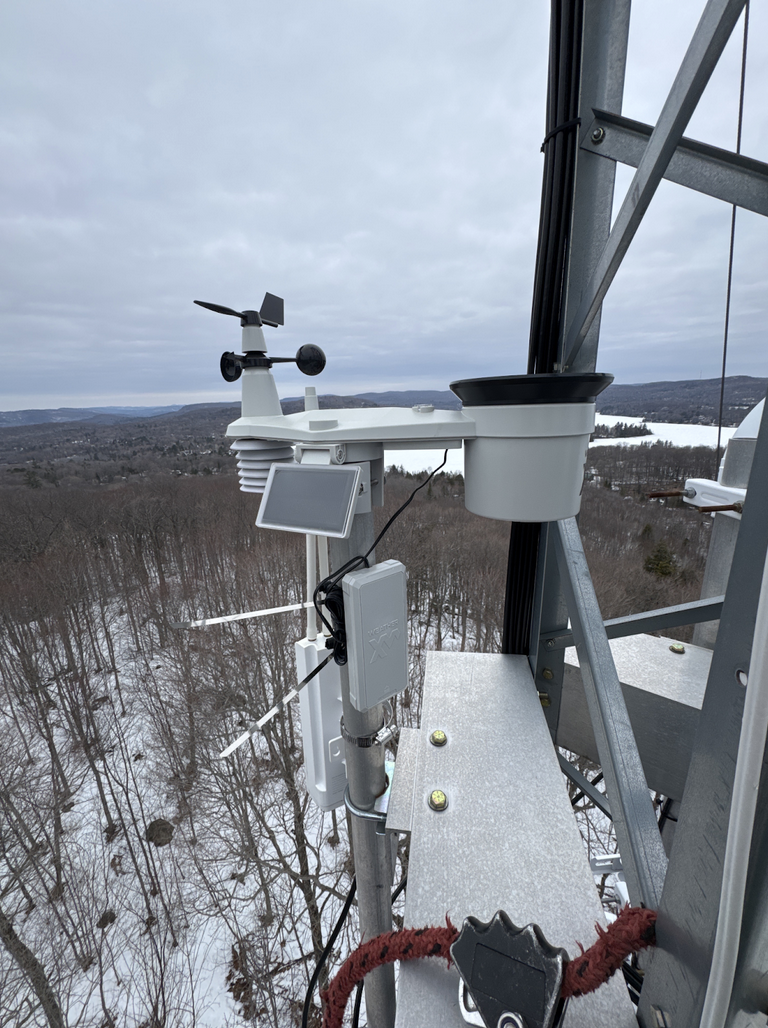 |  | - | - |
This station is installed at a very high position, which is recorded by the SPV tool and is one of the station’s strong positives. However, mounting it on a pillar can be problematic:
- The pillar may block part of the precipitation when the wind blows from certain directions.
- Clearly, wind coming from the direction of the pillar will be underestimated, and its direction may not be accurately recorded.
- From the photos, it is unclear whether the pillar blocks solar radiation at sunrise, so it was not rated negatively for this.
- Here too, the four photos ,one for each point of the horizon, are missing. It is understandable that taking such photos might be difficult, but some could be taken from ground level, always including both the station and the surrounding area.
The Fence Station
| SPV Aspect | Decision Photo 1 | Decision Photo 2 | Decision Photo 3 | Decision Photo 4 |
|---|---|---|---|---|
| Photo Validity | Valid (1/1) | Valid (1/1) | Valid (1/1) | Valid (1/1) |
| Mast Height | Proper | Proper | Proper | Proper |
| Mast Inclination | Not Inclined | Not Inclined | Not Inclined | Not Inclined |
| Temperature and RH | Valid (1/1) | Valid (1/1) | Valid (1/1) | Valid (1/1) |
| Wind | Small Obstacles (0.5/1) | No Obstacles (1/1) | Small Obstacles (0.5/1) | Small Obstacles (0.5/1) |
| Precipitation | Small Obstacles (0.5/1) | No Obstacles (1/1) | No Obstacles (1/1) | No Obstacles (1/1) |
| Solar Irradiance | Small Obstacles (0.5/1) | No Obstacles (1/1) | Small Obstacles (0.5/1) | No Obstacles (1/1) |
| Orientation | East | West | South | North |
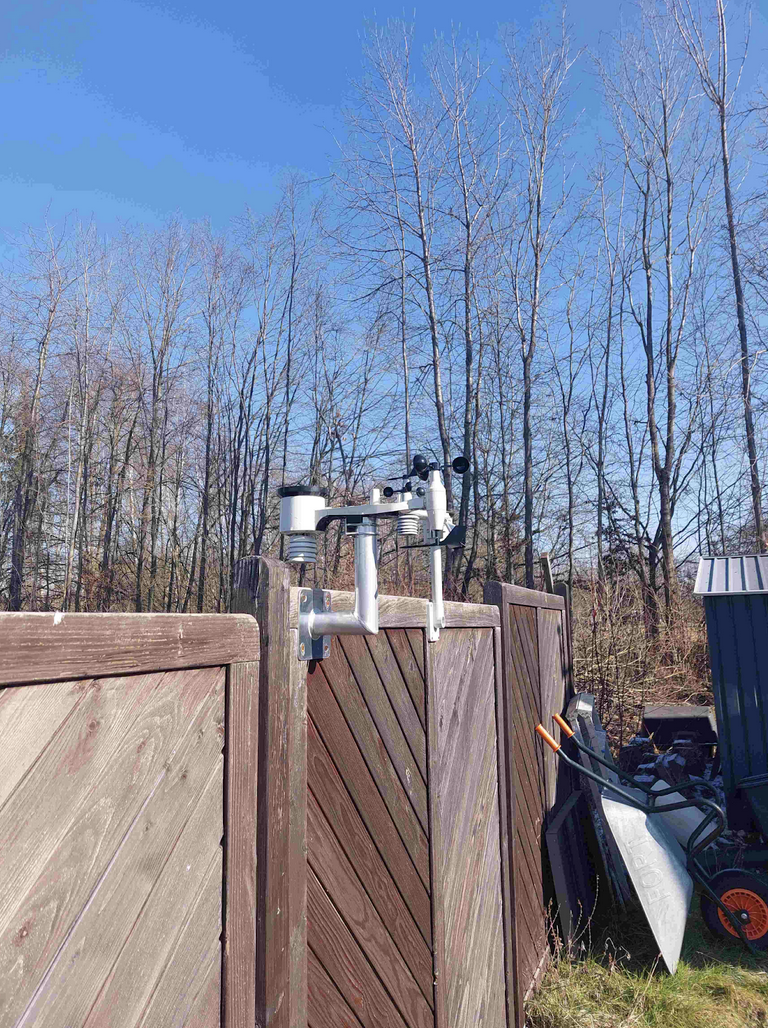 | 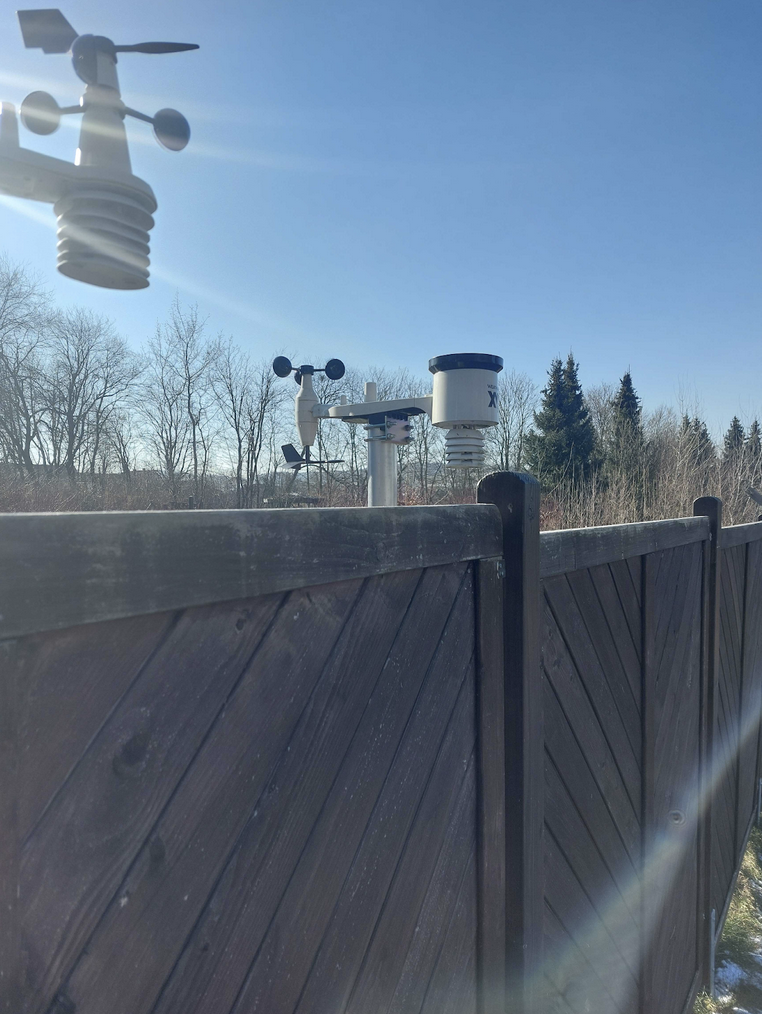 |  | 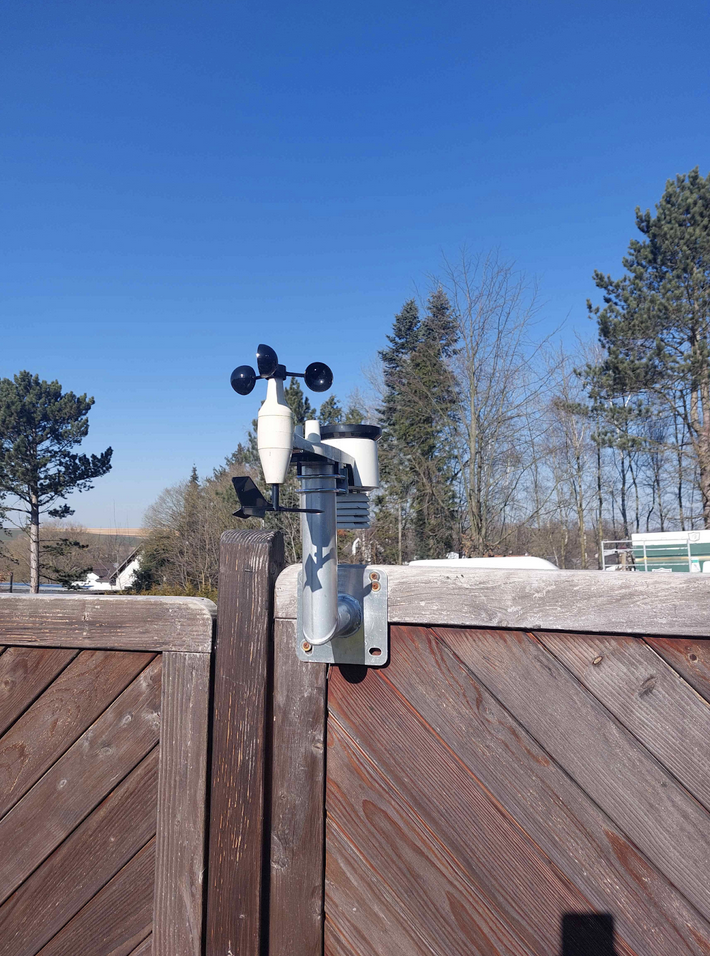 |
This is a type of station installation we encounter often. Although the total height of the station from the ground matches the recommended mast height, the installation is problematic:
- The fence creates friction with the air, causing the flow to slow down and generate turbulent currents that make the anemometer record different wind directions and usually lower wind speeds than the prevailing ones.
- The station is very close to the fence material, and it is likely that the sensor records higher temperatures than expected.
- Tall trees are very close to the station and likely block both the airflow and the sun’s rays.
The Short-Mast Roof Station
| SPV Aspect | Decision Photo 1 | Decision Photo 2 | Decision Photo 3 | Decision Photo 4 |
|---|---|---|---|---|
| Photo Validity | Valid (1/1) | Valid (1/1) | Valid (1/1) | - (0/1) |
| Mast Height | Mid | Mid | Mid | - |
| Mast Inclination | Not Inclined | Not Inclined | Not Inclined | - |
| Temperature and RH | Partly Affected (0.5/1) | Partly Affected (0.5/1) | Partly Affected (0.5/1) | - |
| Wind | Small Obstacles (0.5/1) | Small Obstacles (0.5/1) | Small Obstacles (0.5/1) | - |
| Precipitation | No Obstacles (1/1) | No Obstacles (1/1) | No Obstacles (1/1) | - |
| Solar Irradiance | No Obstacles (1/1) | No Obstacles (1/1) | No Obstacles (1/1) | - |
| Orientation | West | North | East | - |
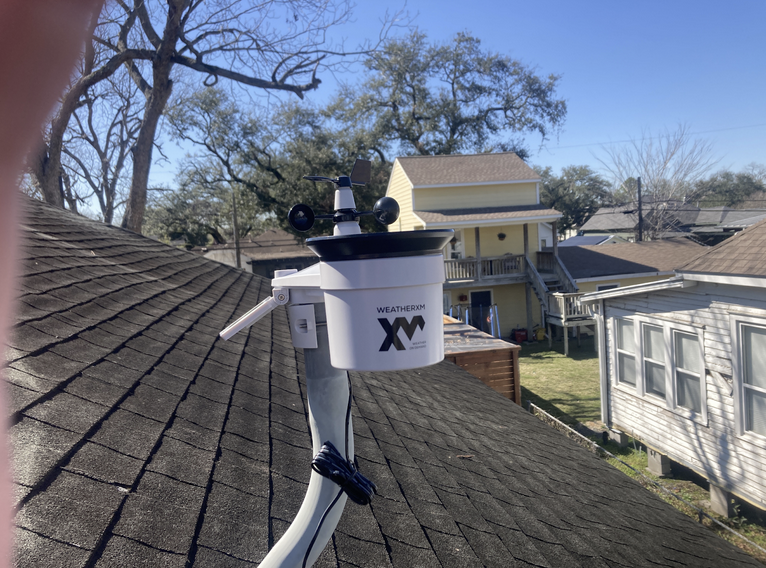 | 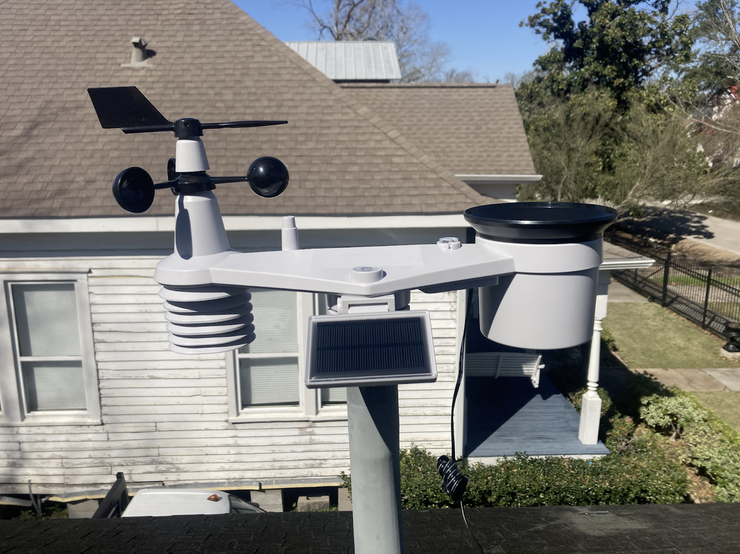 | 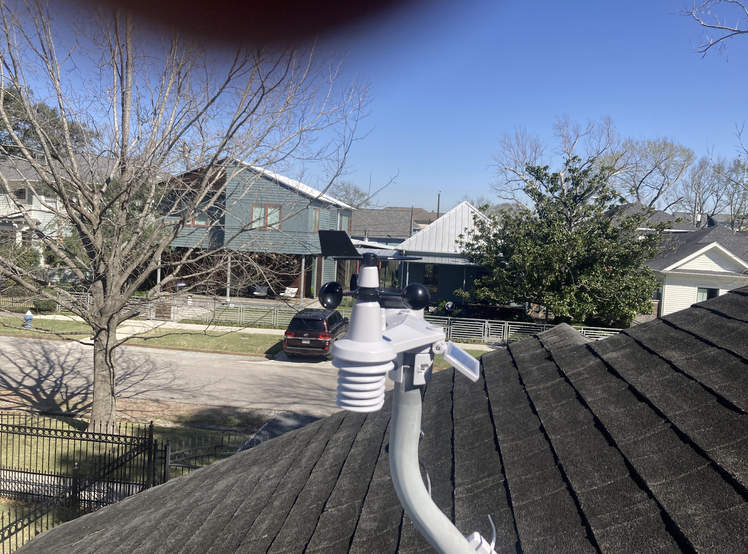 | - |
This station represents another common deployment method we often observe. Despite being installed on a roof, the recommended installation guidelines have not been followed:
- The photo that would depict the southern horizon is missing. If it were available, it would likely show that the roof reaches a level higher than the station, blocking at least the airflow (if not also sunlight when the sun is low, for example). If the station were placed at the roof’s peak on a mast of at least 1.25 m, the roof would not have a significant impact on wind and temperature measurements.
- The mast is much lower than the recommended height, and the temperature measurements are certainly affected by the dark-coloured roof.
- Airflow slows down near the roof tiles, and the building across the way, which has a higher roof, also partially blocks the wind.